

7 Large Cockpit Sailboats: When Size Matters
Are you in the market for a large cockpit sailboat.
Whether you’re a liveaboard couple or a large family, having a sailboat with a large cockpit is extremely desirable.
When shopping for sailboats we had no idea what we wanted or needed. We were just looking for something that would sail and that was within our very tight budget!
Having lived aboard for four years now there are several things we would find hard to leave off the list when shopping for a new boat, and a big cockpit would be number one! Especially if you plan on sailing with a baby or children.
Having the space to entertain large numbers of guests, sleep on the cockpit lockers, move around with ease underway, and all the added storage has made living aboard pretty dreamy, and we’re always the envy of friends when they see just how big our cockpit is.
In this blog post, we’ll take a look at some of the highest-quality boats with big cockpits available and provide you with all the information you need to make an informed purchase.
Table of Contents
- Kadey Krogen 38
- Catalina 387
- Advantages of large cockpit sailboats
- Disadvantages of having a big cockpit
Sailboats With Huge Cockpits

Here are our top picks for sailboats with spacious cockpits.
#1 Kadey Krogen 38
The Kadey Krogen 38 makes the number one spot, and not just because it’s the boat we own!
Kadey Krogen 38s are quite an unusual boat. There aren’t that many of them around, and most are in America. There are a tonne of awesome features and so many things we love about this boat, but probably our favourite thing is the enormous cockpit.
Our sailboat Hot Chocolate has a really wide cockpit, with deep seats that are so comfortable. We often sleep outside on them they are that comfortable!
The cockpit feels really enclosed even though it’s spacious, so we never feel unsafe. There are high sides, and there’s a locker at the stern so it has the feel of a centre cockpit. There are plenty of places to brace yourself against when heeling, and lots of clip in points too.
We really love the design of the Kadey Krogens as liveaboard boats too, as they’re roomy inside and have plenty of space for entertaining inside in the winter months.
If you’re looking for a boat that sails well, is safe in big seas, and has spacious outside and living areas then this is the boat for you!

#2 Sense 50
The Beneteau Sense 50 has been dubbed a monomaran, because it has a cockpit so wide you feel as though you’re on a catamaran. If you love the space of a catamaran and the feel of a monohull then this might be the perfect boat for you!
The boat has a wide swim platform that makes it easy to climb on and off the boat. Visability from the helms is excellent and the seats behind each helm lift and open out to clear the entire transom.
One of the best features of this cockpit is the table that can be lowered to make an outdoor berth for two! There is also plenty of storage outside.
This is an impressive boat but it also comes at an impressive price. If you’re looking for something with a real wow factor then the Sense 50 is definitely worth checking out.
#3 Hunter 38
The Hunter 38 has a great sized cockpit that will seat 8 comfortably. The cockpit feels nice and roomy when entertaining, and the seats are comfortable too.
One of the interesting things about this cockpit design is the folding wheel, which gives you more space to move around when you need it.
The main disadvantage to the cockpit of the Hunter 38 is the lack of storage space. The lockers are somewhat limited in what they can store. This isn’t a deal breaker but it’s something to bear in mind.
#4 Catalina 387
The seats on the Catalina 387 are 9 feet long and able to seat about 14 friends (if you have that many!) This is a really big cockpit for a sailboat of this size and is definitely one of the best options on this list.
Catalinas are known for their spacious cockpits, so if you are’t sold on this size of sailboats then it is worth checking out a Catalina in your preferred length.
This sailboat has a decent amount of space inside as well, making it a good choice for a liveaboard sailboat. There are two cabins and the boat sleeps a total of seven (or more if you like to sleep outside like us!)
In the cockpit you’ll find two spacious lockers where you can store a huge amount of gear should you wish!

#5 Pearson 35
You’ll appreciate the Pearson 35’s huge 9’5″ cockpit if you spend the majority of your time outside when sailing. One of the biggest selling points of this boat is it’shuge cockpit, and it was well ahead of its time when made.
This boat is well designed for liveaboards and for a boat of this size it actually has a lot of room. Although it’s not a large boat you will find adequate living space inside, especially if you sail solo or as a couple.
There are no aft cabins, so you gain some generously sized lockers for storage. The deck plan is well thought out with wide walkways, and the boat sails well.
If you’re looking for a smaller liveaboard sailboat with a large cockpit then this is a great option.
#6 Tartan 10
This 33ft sailboat designed by Sparkman and Stephens isn’t the best choice of boat for a liveaboard, but is a great boat for heading out on the water with friends.
It was built for racing, and therefore has very little going for it below decks, but above decks it’s a fantastic little boat. It sails well and has ample room in the cockpit for a boat of this size, meaning you can fit a big crew onboard and still have room to move around.
If you’re after a spacious day sailor then this sailboat might be the perfect choice.
#7 Opt For A Catamaran

If you are keen for more space in general and you have the budget, then why not consider a catamaran. Most catamarans have larger cockpits than monohulls of the same size, because they stretch the entire width of the boat.
Wondering how much sailboats cost?
There are definite compromises and things to consider before you make a purchase. You might not have as good visibility from the helm in the cockpit of a catamaran, for example.
That being said, there are also a number of advantages to a catamaran such as more stability when underway and in rolly anchorages.
If you’re after a really big cockpit then a catamaran (even a small catamaran ) that’s big enough to seat a number of people, is one of the best choices for you.
The Advantages Of Large Cockpit Sailboats

There are so many advantages to owning a sailboat with a big cockpit, but here are the things we have found the most useful when living aboard.
- Space to properly relax outside at anchor or on calm sailing days.
- Entertaining space. We can seat groups of people for drinks and dinner without feeling cramped or like we’re stepping over each other.
- Room to sail! When we have guests onboard we don’t trip over each other when getting to lines etc.
- Space to sleep outside. We do this regularly during the summer months when it’s too hot indoors. We also sleep outside on passages so that the person on watch is never really alone.
- Huge locker storage. We can fit two full-size bikes in one locker with room to spare!
- On longer passages, like crossing the Atlantic , having the extra space to chill out in is especially nice.
The Disadvantages Of Having A Big Cockpit

One of the biggest drawbacks (in fact, probably the only drawback) to having a big cockpit is stability underway.
We were really worried that Hot Chocolate wouldn’t feel safe while we were out in big seas, as we wouldn’t be as enclosed.
Although this could potentially be an issue on some sailboats, as long as the designer has thought this through it shouldn’t be a problem. Hot Chocolate had plenty of places you could brace yourself against or lean your feet when heeling, and lots of clip in points.
As we talked about earlier, the sides are high giving it the feel of a centre cockpit even though it’s at the stern.
Overall, most people agree that a spacious cockpit is an invaluable feature for any sailboat and if you find you’re lacking a feeling of security then it’s easy to add features to make it feel more enclosed.
Conclusion: The Best Large Cockpit Sailboats
Whether you’re looking forward to long weekends on the water with family and friends or planning to spend your life cruising the world’s oceans, having ample space and comfortable amenities is key, and these sailboats with huge cockpits will give all of that and more!
If you’re looking for more sailing content then make sure you follow us on social media, where we share all our latest articles and news.
Similar Posts

Gill Sailing Gear 2024: Is It Worth The Hype?

Boat Tool Kit Essentials
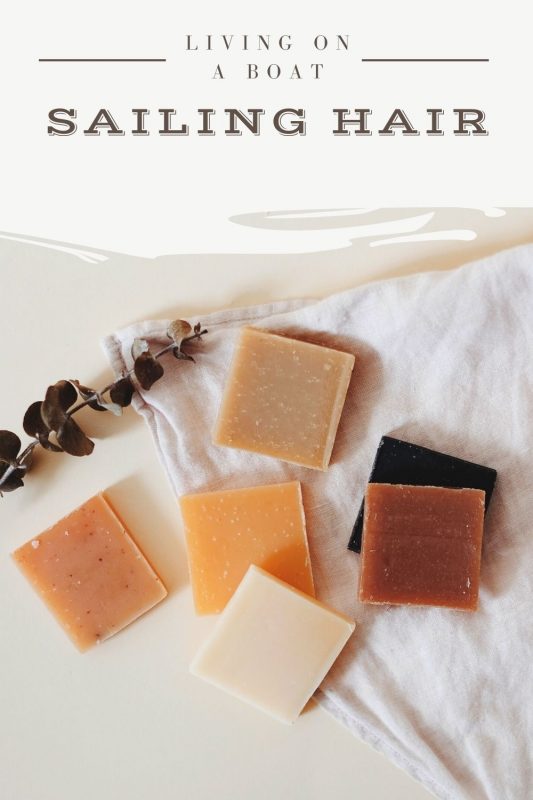
Sailing Hair, Just Don’t Care

Sailing With A Baby: Essential Guide 2024

How To Make Cheap Fender Covers

Sailing In Europe After Brexit 2024

- The Build Process
- Power & Performance
- Flybridge Walkaround
- Flybridge Gameboat
- Inboard Walkaround
- Image Gallery
- Video Gallery
833-FISH-RBW (833) 347-4729
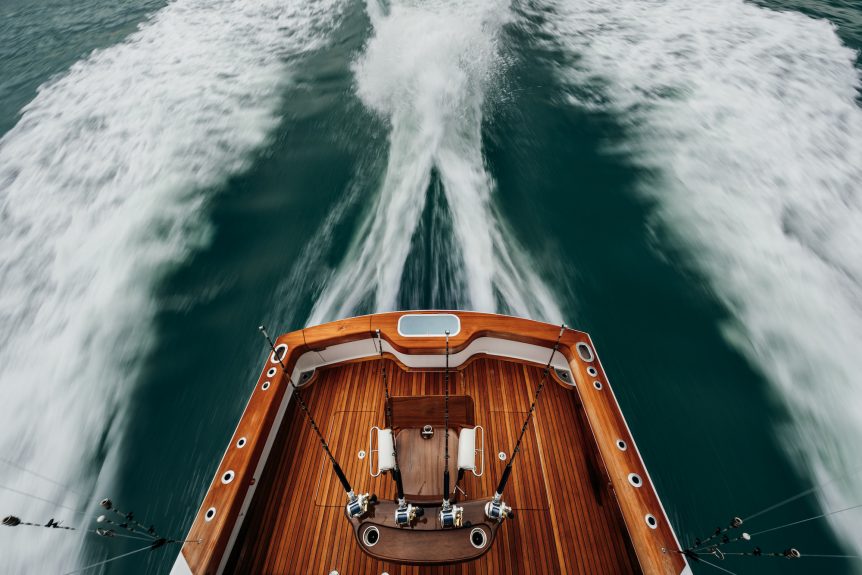
The Anatomy of a Perfect Cockpit
For fishermen, the cockpit is the most important part of the boat, because that’s where the action takes place. We can probably all agree that having plenty of space in which to work sits atop the list of necessities for a great cockpit. There must be plenty of room for several people to move around at the same time. But what else goes into making a cockpit, “perfect?”
Several items come to mind, including gunnel and deck heights, plentiful storage (fish boxes, tackle storage, livewell space, storage for gaffs, rod storage, and more). Gunnel heights are important so you can lock your knees under the gunnel when fishing stand-up in rough seas. And deck height matters because you need to able to reach the surface of the water while standing in the ‘pit, for handling fish at boat-side. If you have a fighting chair, you want it mounted close enough to the transom so the rod tip can clear both corners of the stern, but far enough away so the wire man can easily move between the footrest and the back of the boat.
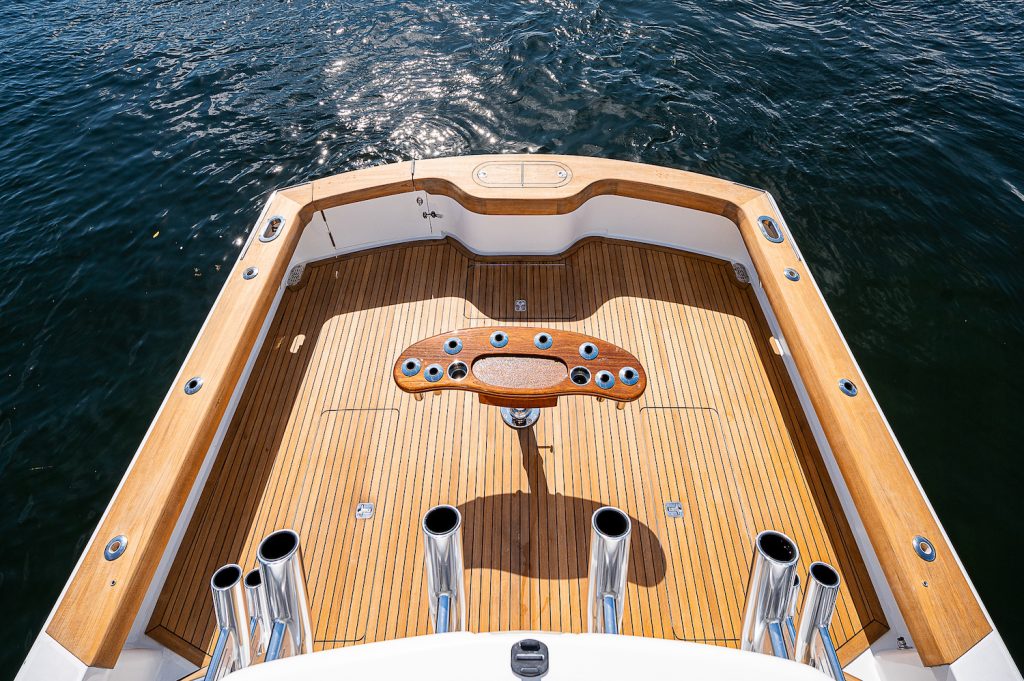
But there’s so much more that goes into cockpit design. Here, Release Boatworks’ naval architect Erwin Gerards sheds some light on how a great cockpit gets designed.
“There are ‘standards,’ though they’re not totally standard, because you can play with them depending on what you need for fuel and exhaust space under the deck,” Gerards said. “For instance, I have a standard camber that I use on most boats, but if it’s a big sportfish boat, then the camber gets a little less because you don’t want to put too much crown in it. There’s a standard height from the cockpit to the top of the covering board, approximately 25 to 28 inches depending on the size of the boat, and then obviously you need a certain amount of space for a chair or a rocket launcher and people fighting the fish in the cockpit. Where the process starts blending aesthetics with functionality is the size of the cockpit—where is the house located on the hull? Some people want to have the house further aft which makes the cockpit smaller and the interior bigger, so you can play with that.”
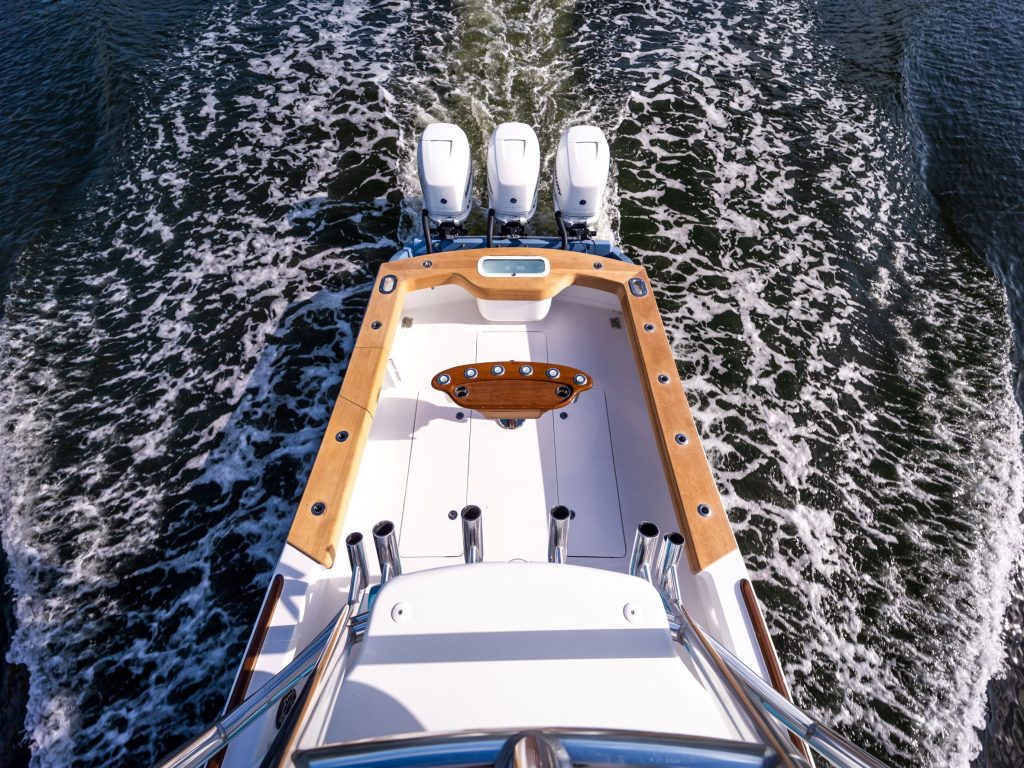
Gerards adds that gunnel height is key. “Again, that depends on the size of the boat,” he said. “With larger sportfish boats I can make it a little bit taller, but you must be careful because it’s harder to grab a billfish or a line if the gunnel is too high. When I start, depending on the size of the boat, I’ll know what looks good for gunnel height, so I have a baseline to work with. And then you have to take into account things like the fuel and exhaust. We call this the ‘design spiral,’ you start with a concept and then you keep going in circles, tweaking things until you get to the center—moving decks, the beam of the boat, the height of the gunnels, the engines, the weight. And as you move closer to the center everything comes together into a design that functions well.”
Leave a Reply Cancel reply
Your email address will not be published. Required fields are marked *

Monday - Friday| 9 AM - 6 PM EST
Saturday | Closed
Sunday | Closed
OPEN 24/7 - www.releaseboatworks.com/contact
833-347-4729
(800) 213-7856
901 Duerer St
Egg Harbor City, NJ 08215

| Featured Sailboat:
| ||||||||||||||||
42 Year: 2016 Asking: $475,000
This is a very long, comprehensive video of our Westsail 42, "Sea Rat". GENERAL INFO: Our sailboat "Sea Rat" is a 1978 Westsail 42 cutter. It has the tall rig, 2-spreader mast, great sails, new standing rigging, new chainplates, barrier coated hull, CPT Autopilot, Monitor Windvane, Tigres windlass, and a Yanmar 4JH4-TE diesel engine with 700 hours. You could launch this boat next week and begin a circumnavigation. A UNIQUE FACT: Our Westsail is hull #100. While it is undeniably a boat built in 1978, which makes it 46 years old, the boat has seen drastically less use than its age would suggest. For 30 years the boat was stored, unfinished, in California. The sails and original rigging was stored indoors during this period. This is why the sails, while original, are in such great shape. Essentially, the boat has really only been used for about 15 years of its overall life. It's a bit like when someone finds an old classic car that's been stored in a barn for 30 years. In this way, our boat shows far less wear and tear than you'd expect for a boat of this age. LOCATION: She's currently on the hard in St Mary's, GA in one of the only DIY marinas left on the East coast. It's a great place to keep a boat, especially if you prefer to do your own work, like we do. It is OK if you spend the night on the boat in this work yard. It's already set up with an air conditioner so things stay cool and dehumidified while at the boat. SAILING CHARACTERISTICS: Contrary to mis-guided belief, the Westsail 42 is quite fast, regularly sailing at speeds over 8 knots sustained. She tends to sail at about half the windspeed and does surprisingly well even in lighter winds. She will point at angles closer than 45 degrees to the wind, but does begin to slip rapidly if pressed to sail much closer than that. She's a HEAVY displacement, full-keel sailboat that's fast, capable, safe, stable, and very comfortable in the ocean. She's a wonderful boat. Solid, trustworthy, capable and comfortable. 42 Year: 1978 Asking: $80,000
34 Year: 2008 Asking: $69,000
43 Year: 1990 Asking: $89,995
34 Year: 1986 Asking: $22,500
24 Year: 1976 Asking: $5,000
Standard Sailboat Ads:
19 Year: 2013 Asking: $16,500
23 Year: 2012 Asking: $25,000
24.5 Year: 1970 Asking: $
36 Year: 2007 Asking: $210,000
26 Year: 1981 Asking: $6,000
44 Year: 2009 Asking: $360,000
41 Year: 2004 Asking: $220,000
26 Year: 1978 Asking: $5,900
14 Year: 1998 Asking: $5,000
| .com
If you are serious about selling your boat, ! There are no catches. And we don't charge any commission. We allow buyers to contact sellers direct. For a very economical one-time fee you can feature your sailboat here where hundreds of potential buyers can see your ad each and every day! |
.com provides an extensive listing of sailboats: cruising yachts, daysailers, raceboats, catamarans, trimarans, and custom yachts. Each photo sailboat listing includes specs-at-a-glance as well as a detailed description and contact information.
|
|
|
|
- Types of Sailboats
- Parts of a Sailboat
- Cruising Boats
- Small Sailboats
- Design Basics
- Sailboats under 30'
- Sailboats 30'-35
- Sailboats 35'-40'
- Sailboats 40'-45'
- Sailboats 45'-50'
- Sailboats 50'-55'
- Sailboats over 55'
- Masts & Spars
- Knots, Bends & Hitches
- The 12v Energy Equation
- Electronics & Instrumentation
- Build Your Own Boat
- Buying a Used Boat
- Choosing Accessories
- Living on a Boat
- Cruising Offshore
- Sailing in the Caribbean
- Anchoring Skills
- Sailing Authors & Their Writings
- Mary's Journal
- Nautical Terms
- Cruising Sailboats for Sale
- List your Boat for Sale Here!
- Used Sailing Equipment for Sale
- Sell Your Unwanted Gear
- Sailing eBooks: Download them here!
- Your Sailboats
- Your Sailing Stories
- Your Fishing Stories
- Advertising
- What's New?
- Chartering a Sailboat
- Sailboat Cockpit
What makes for an Efficient Sailboat Cockpit?
Perhaps because sailboat cockpit design doesn't present the same marketing opportunities as the living space below it, it's not unusual to find that cockpit layouts have been compromised in favour of a commodious aft-cabin.
This is borne out by a number of modestly sized boats that accept the disadvantages of a centre-cockpit in favour of a veritable bedroom in the stern where the cockpit should rightly be.
Underway, the cockpit is the centre of activity. Helming, watchkeeping, sail trimming or just plain relaxing - it's all done from here.
Sheets, cleats and jammers should fall readily to hand, and winch handles must be able to operate 'full circle'.
Properly thought out, it will be a satisfying and safe place to be - efficient for sailors and comfortable for our guests.
Keeping the Helmsman & Sheet Handlers Happy
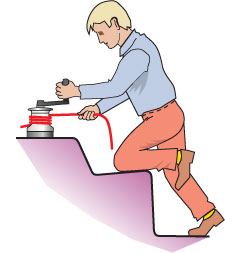
Foremost in the cockpit designer's mind should be the requirements of the helmsman and the sheet handlers.
For a wheel-steered yacht a 'T' shaped cockpit is often the preferred solution, giving the otherwise trapped helmsman room to move around the wheel into the main part of the cockpit.
The cockpit seats of a tiller-steered yacht must accommodate the sweep of the tiller without interference, and the tiller itself should be of a height and shape to avoid the knees of a sitting helmsman.
Sailboat Cockpit Ergonomics and Dimensions

It's not enough for the cockpit to be secure; it must also feel secure. But it won't if the sensation is of being perched upon on it rather than being in it.
Security is largely a function of the depth of the cockpit, over which other factors have a controlling influence:~
- At extreme angles of heel the leeward edge of the sole must remain above the waterline level to enable it to drain;
- The cockpit sole should not be so deep such that it is impossible to see over the coachroof when standing up;
- Although the dimensions of the human body determine the height of the seat above the sole, usually 375mm to 500mm, ideally you'll also be able to see over the coachroof when sitting down.
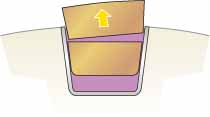
Other features to be found in a good, sea-going sail boat cockpit layout include:~
- Seatbacks that are at least 350mm high and angled such that you can remain sitting upright on the windward side when the boat is heeled;
- Seats wide enough, around 500mm, to provide adequate support under the thighs;
- Seats that are parallel and close enough together to enable seated occupants on the windward side to comfortably brace their feet against the leeward seats when heeled;
- Moderate volume and adequate drainage. For an aft-cockpit boat, the most efficient drainage is through the transom. A couple of 50mm diameter holes here will drain a moderately sized sailboat cockpit inside two minutes;
- A bridgedeck to at least the height of the seats, which not only reduces the volume of the cockpit well but also provides a step-up to the companionway sill;
- The companionway sill should be at least as high as the coaming, thereby preventing a cockpit full of water from finding its way below;
- A main hatch, preferably on the centreline, with moderately angled sides. Washboards in a heavily vee'd hatch only have to float up a short distance before they fall out.
Artwork by Andrew Simpson
A Cockpit Table?
The final embellishment for the perfect sailboat cockpit is a cockpit table, which four people can sit around comfortable.
Many sailboats with wheel steering have a fixed table attached to the pedestal as shown here, but my preference is to keep the cockpit clear when underway, and have a table that folds down against the pedestal.
Tiller steered sailboats usually have a removable cockpit table for use at anchor or in harbour.
Read here the argument for where the sailboat cockpit is best placed - centre or aft?
You might like to take a look at these...
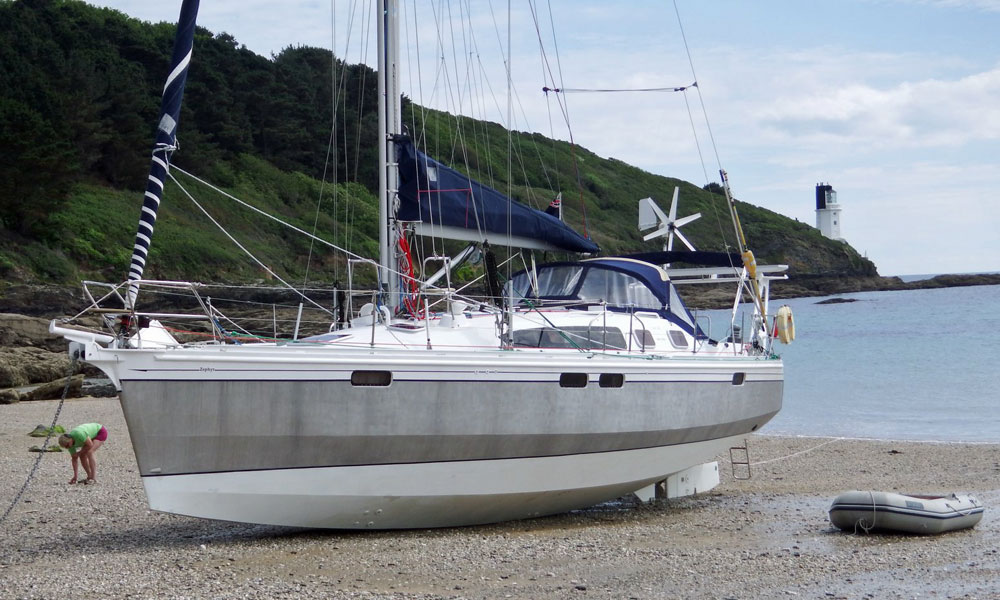
Why Some Sailboat Keels Perform Better To Windward Than Others
But it's not just about windward performance, other types of sailboat keels may suit your sailing area better and reduce your mooring costs; for example
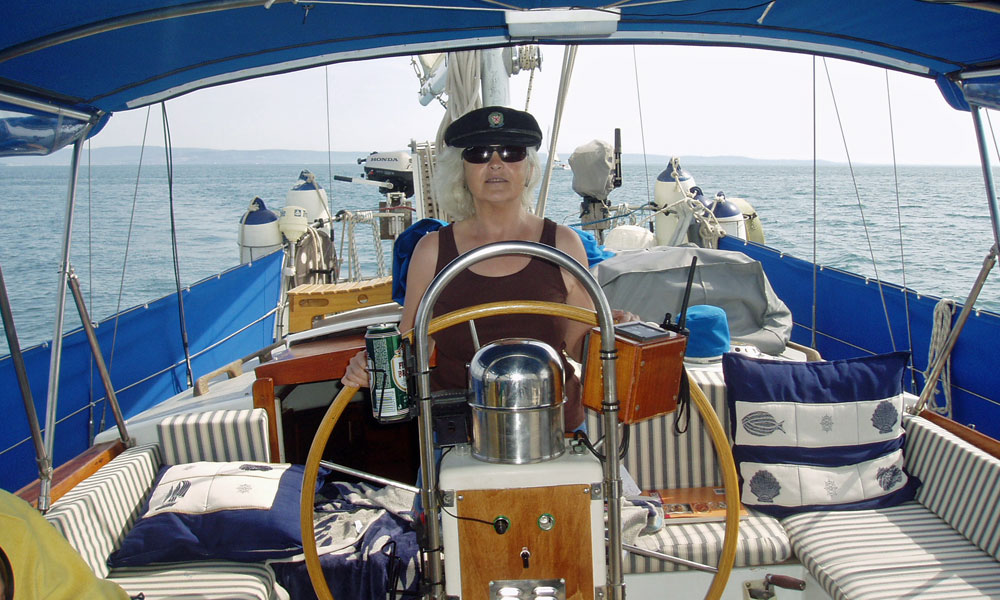
The Case for Sailboat Tillers as an Alternative To Wheel Steering
Just why do so many modern sailboats have wheel steering when sailboat tillers are cheaper, more reliable and convenient? Check out this comparison between wheels and tillers

Understanding Hullspeed and the Speed/Length Ratio
For any displacement hull of a given length there's a maximum hullspeed; the longer the waterline length, the quicker the boat. Here's how it works
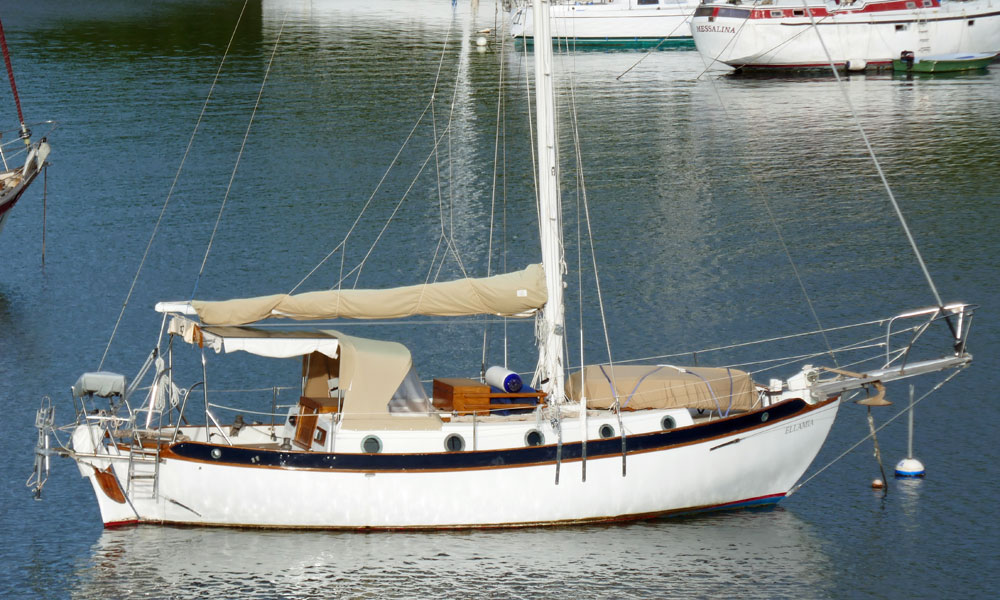
Are Heavy Displacement Hulls the Best Choice for Offshore Cruising?
Increasingly, offshore sailboat skippers are choosing moderate displacement hull forms in preference to heavier vessels when planning for an ocean crossing. And here's why...
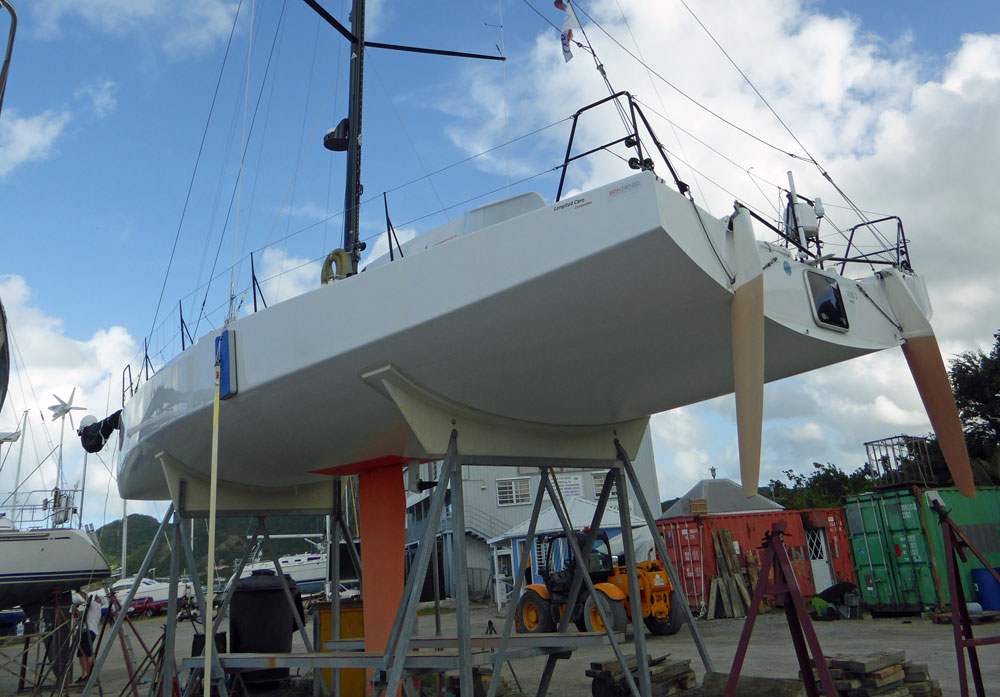
Sailboat Rudders
Illustrated examples of Balanced Sailboat Rudders, Semi-Balanced Rudders, Keel-Hung Rudders, Skeg-Hung Rudders, Spade Rudders, Twin Rudders, and Transom-Hung Rudders
Recent Articles
The CSY 44 Mid-Cockpit Sailboat
Sep 15, 24 08:18 AM
Hallberg-Rassy 41 Specs & Key Performance Indicators
Sep 14, 24 03:41 AM
Amel Kirk 36 Sailboat Specs & Key Performance Indicators
Sep 07, 24 03:38 PM
Here's where to:
- Find Used Sailboats for Sale...
- Find Used Sailing Gear for Sale...
- List your Sailboat for Sale...
- List your Used Sailing Gear...
Our eBooks...

A few of our Most Popular Pages...

Copyright © 2024 Dick McClary Sailboat-Cruising.com

- Forum Listing
- Marketplace
- Advanced Search
- About The Boat
- Boat Review Forum
- SailNet is a forum community dedicated to Sailing enthusiasts. Come join the discussion about sailing, modifications, classifieds, troubleshooting, repairs, reviews, maintenance, and more!
Mid-size daysailer with large cockpit
- Add to quote
By the apparent dirth of these on the market, I'm going to guess that the type of boat I think I want has not been popular with a mass market. I'm OK with that. Probable use: daysailing for singlehand thru 6 adults, enough cabin to let kids get out of the sun or use the head/port-o-pot, lakes/bays/protected waters, try my hand at PRHF racing (preferably with spinnaker), trailerable a plus; bigger is better for wife, friends/family and kids as passengers Other: used; do not mind hands-on maintenance but do not want a wooden hull; sit in not sit on; prefer sloop and cutter, do not prefer (sorry if I offend) catboats and catamarans Boats I've been thinking about (with cockpit length): Chrysler 20 (9.5 ft), Capri 22 (8-9 I forget), Colgate 26 (11 ft) - like the size but may be out of my pricerange Which boats should be on my list that I'm missing? Comments from owners of these boats would be very welcome. Thanks!
In most respects your list is on the mark. Precision, hunters etc will also work. The issue will be finding any trailable boat that you can sail with 6 on board. Boat trim will be a challange with 900lbs of people in the back. Almost all small boats have tillers, reducing sitting area while sailing. Six at the dock for lunch might work. Most people, including kids, will not be happy in interior of these size boats for any period of time. I am sure others will chime in with other options. Good luck!
Cal 20 Friend of mine has one, big comfy cockpit, and sails very well!
Rainbow. Rainbow 24 Sailboat Sail boat Rainbow Tidewater Chingachgook YMCA
If the cabin/port-a-potty isn't too important, have a look at the Rhodes 19. LOTS of cockpit space and nice and deep/safe-feeling.
Two boats immediately spring to mind. One is the Quickstep24. I have one and it's great for most of the things you describe except racing. It's quite stable, has a big cockpit (I don't know about for 6 adults, but certinainly big), it's heavily built and easy on the eye. It's reasonably responsive, but sacrifices light air performance for stability. With a PHRF rating of 240 it might not be a satisfying racer. It has a modest cabin that would sleep two adults and two kids in reasonable comfort. It might sleep 4 adults but two of them would be uncomfortable. The other is the Alerion express 28. Many of the same attributes as the Quickstep, but with a bump in performance, size and in price. Quicksteps were made in the 80's and can be had in the $12k range Alerions are more recent and used boats go in the $60k-$80k range
Quickstep192 said: Two boats immediately spring to mind. The other is the Alerion express 28. Many of the same attributes as the Quickstep, but with a bump in performance, size and in price. Alerions are more recent and used boats go in the $60k-$80k range Click to expand...
Rhodes makes the Mariner, which is the same boat with tiny cabin. Very nice boat. I had pretty much the same checklist and just bought a Precision 18, although I would have been tempted if I found a great Catalina 22, etc. As you would expect, new are vastly more than used....BUT, if you have the $$ and can make a sweet deal (most makers WILL do do now), then you can expect a very good resale value if kept in top shape...at least for the first 10 years or so. I, and also others here, suggest paying cash.......and not going into debt for toys like this. If that is not possible, perhaps a really low interest rate based on home equity...as opposed to a boat loan....with a LOT down, to avoid the future trap of owing more on the boat than it's value.
Oh, didn't see the racing criteria...that is going to limit you perhaps to a class design of some sort.......
A Chrysler 22 or 26 might suit your needs. A 22 has adequate sitting head room down below, while the 26 has standing head room. They stopped making them in 1980, but you can still find them fairly cheap. They sit at least 4 in the cockpit and sleep up to five. 22 has a porti-poti and the 26 an enclosed toilet area. Both are swing keel and trailerable. Very good support through owners at: Chrysler Sailors Home Page I have a 22 and it's a good boat, especially for beaching. Steve
Add the Sonar to your list.
The Soling would be another good choice.
I would second the Sonar. It is a good bit more user-friendly than the Soling. It has a cuddy, comfortable contoured seats, and is raced without having to resort to extreme hiking. If you are going into that size range, a used J/24 might be less expensive than a Sonar, and extend your cruising range considerably too. The question is whether a keelboat like these will work for you.
Thanks for the useful replies. Good suggestions about boats I haven't noticed yet. I also found today that a Ranger 20 or 22 might work and there seems to be more of them than Chrysler 20s. Anything with a keel and a handicap is OK for the local beercan races I'd be interested in. Only one design keelboat action near me is J/24 and Catalina 22. Will be paying cash for this boat. Dream boat right now is something like e33 or one of the Aelerons, but I want to try a trailerable first. I want to have the option of taking my boat to the Texas coast, without a hauler and an oversize permit. Others in our family have power boats and routinely take 6-10 people out for a ride and swim. I have been thinking about sailing with a bigger group than most seem to be able to accomodate with small sailboats. Or, do you ask some guests to go forward on deck? Railmeat, anyone? Maybe a non-cabin option is two Buccaneer 18's and we can race each other!
if you throw out the racing and trailering look at a hunter 27 1975 to 1983. the cockpit will seat 6 easily, it has a head and a huge saloon. if you want racing i dont know anything about it. i dont know much bout the hunter 25 of the same era but it might be worth a look. here is one just to show the looks and size, it is trailerable. but i dont know about the racing part. the cheribini designed boats are very solid 1982 HUNTER HUNTER 25 sailboat for sale in Georgia
Well The trailer thing really knocks out a lot of the larger boats in your budget unless you dont mind spending and hour plus when you launch and and hour plus when your done. I have been there and done that and it wears out pretty quick I really cant think of any small boat that is going to do the 6 people thing without a whole lot of moving around every tack
I've seen 6 in a Flying Scot. Seems like 4 should be max though...
You should add the Oday Tempest to your list. A 23' Rhodes design, the cockpit is very large, the cabin is small, and the lines are sweet. Finding one in good shape may be a chore, but they can be had very cheap.
If trailering is not really big, I would consider the Rhodes 19 (smaller) or an old Pearson Ensign (bigger, at 22 feet). The Ensign is actively raced, has a cockpit larger than most 30'ers, the cockpit is deep, secure and comfy, with a working jib she is easy to singlehand, there are many active racing fleets, and they should be available fairly cheap. Unlike many boats, you sit in the cockpit, not on it. Good luck with whatever you choose.
Priorities I think you are going to have to make some choices to narrow the selection down a bit. I can't tell which way you are leaning, but if you want to seat six and use it as a day sailor, you may have to look bigger. For example, my Santana 35 is perfect for that kind of thing - that's what I use it for. That lets out trailering, obviously, and may cost more than you want to pay. All those small boats that everyone else are suggesting are great daysailors, but not for six people. And if you manage to get that many people in them, they will have to sit perfectly erect, and the boat will be so weighed down you won't be able to move.
Yes on the Chrysler 20 The Chrysler 20 is a wonderful boat; I still wish I had mine. The cockpit is HUGE. They are initially stable with that 8' beam, but can move along well in a good breeze. I particularly loved the "big boat" rudder (not transom-hung) which allowed me to comfortably stand at the helm in the sole of the cockpit. They can sometimes be hard to find, but are worth the look. They are well-made, comfortable and enjoyable boats. Murph
You should consider a Shark as well: SharkBytes | Shark Sailing | Shark One Design | Shark Sailboat | Canadian Shark Class Association | International Shark Class Association
I had the exact same needs as you as a move-up boat from our 17-foot O'Day Daysailer. We wanted easy trailering, launch / retrieve and especially a large enough cockpit for 6 (The DS maxes out at 4). The Chrysler 20 was the closest I could find, but upon test-sailing it, it was just too much of a dog for this dinghy sailor. Plus, we had no real interest in any kind of cabin since we daysail only... but the cockpit was very generous (though with all passenger weight in the rear, I think this boat would really squat with 6 aboard). I've also read the thru-the-sole rudder is trouble-prone. Then we discovered the Paceship P20 ( www.paceship.org) ... unquestionably the biggest cockpit I've found in a centerboard planing-hull trailerable (850 pounds). It has an 8-foot beam but launch / retrieve is still only about 20 minutes for my wife and I (in our mid-50s). Buccaneers are great performers, but no way they'll hold 6. Others in the larger open-boat / daysailer category you might look into are: Rhodes 19 / Mariner Interlake Highlander Flying Scot None come close to the P20 for cockpit space, but all will out-sail the P20. Good luck
How bout a Tanzer 22? If fits several of your critera but I don't know how trailerable it would be.
North American Spirit Since you are in Texas, these were made in Austin way back when, and are as plentiful there as I would suppose anywhere. I have one on a double axle trailer...sails and trails like a dream to me. When I tie up next to a Cat 22, I think I'm on a 25 footer. I used it as a trainer. It didn't give me 2 foot itis...it gave me 12 foot itis.
My Watkins 23 has been a great boat. It's cheap, rugged, stable, comfortable, and forgiving of mistakes. It is a centerboard design which can be beached and draws only about 20" fully loaded. My only complaint is that she is a little slow on a beat but otherwise my Watkins 23 is just awsome! Hope this helps! Michael
- ?
- 176.4K members
Top Contributors this Month

- Forums New posts Unanswered threads Register Top Posts Email
- What's new New posts New Posts (legacy) Latest activity New media
- Media New media New comments
- Boat Info Downloads Weekly Quiz Topic FAQ 10000boatnames.com
- Classifieds Sell Your Boat Used Gear for Sale
- Parts General Marine Parts Hunter Beneteau Catalina MacGregor Oday
- Help Terms of Use Monday Mail Subscribe Monday Mail Unsubscribe

cockpit size
- Thread starter nottooold
- Start date Apr 26, 2020
- Catalina Owner Forums
- Ask A Catalina Owner
how much longer is the cockpit in a capri 16.5 than a 14.2?
The best thing for you to do is go to sailboatdata.com. They list all the specs for most models manufactured over the years...their information is reliable.
nottooold said: how much longer is the cockpit in a capri 16.5 than a 14.2? Click to expand
- This site uses cookies to help personalise content, tailor your experience and to keep you logged in if you register. By continuing to use this site, you are consenting to our use of cookies. Accept Learn more…
Attainable Adventure Cruising
The Offshore Voyaging Reference Site
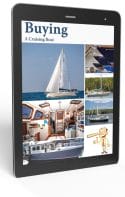
- Cockpits—Part 2, Visibility and Ergonomics
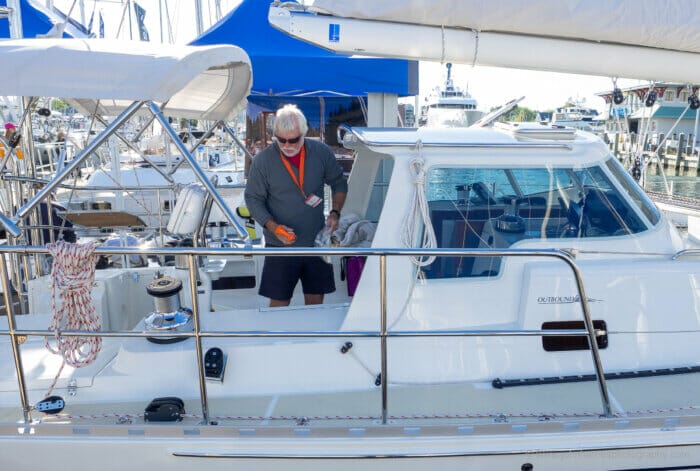
There are few areas on any boat that are used for more diverse tasks than an offshore sailboat cockpit. Everything from lounging on a quiet day at anchor to handling a fast-moving emergency at sea with a bunch of sail up…in the black dark…with a ship bearing down on us.
Given that, picking a boat with a good cockpit layout is one of the most important parts of boat selection.
It’s also one of the hardest to get right, because we will inspect most prospective boats at the wharf or mooring where features supporting lounging will be a lot more obvious than features that will work offshore at oh-dark-thirty when it’s blowing stink and the yogurt’s flying.
And, further, many of us will have to make this decision without a lot, or maybe any, offshore experience, one of the reasons I strongly recommend making an offshore passage with someone else before buying a cruising boat.
That said, I can provide a cockpit selection framework to make this process easier based on the thousands—literally, I did some back-of-the-envelope estimating—of hours I have spent on watch, mostly offshore, in all weathers, in sailboat cockpits.
To further set the parameters, I’m going to focus on cockpits optimized for one to four people. This is important to make clear since full-crew racing-optimized cockpits will be very different.
Also, keep in mind that this is just one article among many that I have written about boat selection, so, for example, I have already explored main traveler positioning options, and won’t cover that again here.
As usual I will use the Outbound 44/46, the Boréal boats, our own Morgan’s Cloud, and a couple of others to illustrate each point.
Let’s dig in:
Login to continue reading (scroll down)
Please Share a Link:
More Articles From Online Book: How To Buy a Cruising Boat:
- The Right Way to Buy a Boat…And The Wrong Way
- Is It a Need or a Want?
- Buying a Boat—A Different Way To Think About Price
- Buying a Cruising Boat—Five Tips for The Half-Assed Option
- Are Refits Worth It?
- Buying a Boat—Never Say Never
- Selecting The Right Hull Form
- Five Ways That Bad Boats Happen
- How Weight Affects Boat Performance and Motion Comfort
- Easily Driven Boats Are Better
- 12 Tips To Avoid Ruining Our Easily Driven Sailboat
- Learn From The Designers
- You May Need a Bigger Boat Than You Think
- Sail Area: Overlap, Multihulls, And Racing Rules
- 8 Tips For a Great Cruising Boat Interior Arrangement
- Of Cockpits, Wheelhouses And Engine Rooms
- Offshore Sailboat Keel Types
- Cockpits—Part 1, Safe and Seamanlike
- Offshore Sailboat Winches, Selection and Positioning
- Choosing a Cruising Boat—Shelter
- Choosing A Cruising Boat—Shade and Ventilation
- Pitfalls to Avoid When Buying a New Voyaging Boat
- Cyclical Loading: Why Offshore Sailing Is So Hard On A Boat
- Cycle Loading—8 Tips for Boat and Gear Purchases
- Characteristics of Boat Building Materials
- Impact Resistance—How Hull Materials Respond to Impacts
- Impact Resistance—Two Collision Scenarios
- Hull Materials, Which Is Best?
- The Five Things We Need to Check When Buying a Boat
- Six Warnings About Buying Fibreglass Boats
- Buying a Fibreglass Boat—Hiring a Surveyor and Managing the Survey
- What We Need to Know About Moisture Meters and Wet Fibreglass Laminate
- US$30,000 Starter Cruiser—Part 2, The Boat We Bought
- Q&A, What’s the Maximum Sailboat Size For a Couple?
- At What Age should You Stop Sailing And Buy a Motorboat?
- A Motorsailer For Offshore Voyaging?
- The Two Biggest Lies Yacht Brokers Tell
Hi John, Agree on all counts. The cockpit can be completely revealing of the intentions of the designer and what he/she thinks of the target audience/users. Nowhere else on a boat are the compromises that go into boat design so apparent. And, with your article in hand, these intentions can be read like a book. And your suggestion of offshore experience can’t be overstated (perhaps a good imagination and lots of coastal cruising experience could come close): most of us have a good sense of what makes us comfortable while having little initial idea what works (or doesn’t work) for the various fire drills that a good cockpit layout facilitates. A question: any thoughts on the tinted windows on the Outbound pictured. My guess is that they degrade visibility in marginal conditions and at night, but have no idea how much or whether an issue. I think I would want clear panes and use another method to cut back on sun intensity when needed. My best, Dick Stevenson, s/v Alchemy
Thanks for confirmation on that from someone. who has spent a lot of time offshore in a cockpit.
As to the tinting on the Outbound windows, I don’t know. What I can say is that the actual amount of tint is much less than the photo would indicate, so I’m guessing that it would not be much of a problem, if at all. The other good thing is that if unsure of what we are seeing, we can always stand up and look over.
Hi John, The overly huge steering wheel comes from fully crewed racing boats, of course, where the helm stays behind the wheel at all times. Putting this solution on cruising boats is like putting a huge Formula One wing on a family car. Maybe it feels cool, but it just doesn’t work the same way. Essentially it’s quite silly and as described here, it can destroy the functionality of the cockpit, even if all else is perfect.
Lately an interesting solution to this problem, an alternative to one huge wheel or twin wheels, has been presented by Danish Jefa, the worlds biggest in yachting steering systems. As an example, they are the maker of the autopilot drive units sold as B&G, Simrad, Garmin, and many more.
They now have a “Pendular steering pedestal”. The pedestal and wheel moves between 3 positions, centre and each side. This makes a 0,8 metre wheel do the job of a 2,5 metre wheel. One can sit on the suitable side of the cockpit or stand in the centre, while never blocking movement in the cockpit. The pedestal has a foot pedal that releases it from its position. When it reaches the next it locks in automatically.
I’ve seen a boat with this system, but never tried sailing with it. It looks well made and reportedly works as well as it looks. Some new models have this as a standard solution. https://jefa.com/steering/products/cable/WP900/wp900.htm
I agree, that offering from Jefa looks like a great idea. That said, like you, I would need to try it out to be sure.
Another benefit I just though of is that it could make fitting a practical emergency tiller much more practical than with a centre line wheel where the tiller is usually too short because it must clear the binnacle.
I would need convincing that this Jefa wheel could be adequately anchored to the floor. The fixing plate is very short fore and aft. The binnacle is a massively important strong point. I know of a wheel bent by helmsman’s body whose ribs were cracked when a wave came in over the stern in overfalls. From the brochure this looks only good for inshore boats.
Hi Richard,
You may easily be right. I have never even seen one, so no opinion.
Hi Richard, I’ve seen one and “tested” it, but as mentioned, not actually sailed with it, so I’m definitely not informed well enough to evaluate this. Still, FWIW, it felt good. Seemed just as stable as normal. There is a slight bit of fore and aft movement, if you try to do just that. While steering I think it will not at all move that way. There was no sideways wobble. I could not notice any difference in friction. Feels very direct.
When it comes to impact strength, I agree that it would probably not hold up if the boat hits a rock and the helm gets thrown towards it. I’m pretty sure that the deck plate will not break, but that part of the boat will. The leverage is just too much for normal laminates etc. However, i’ve seen binnacles collapse in that situation too. Perhaps it would be better if the mounting plate was bigger. I think so.
Still I don’t know if it should be made strong enough to take the above mentioned loads. As you mention, people can get hurt by such situations. Perhaps it’s better if the first object you hit does flex quite a bit to reduce the blow. I don’t know what to think about it. I’m nerdy enough to prefer tillers anyway…. 🙂
Hi, this sort of tilting binnacle has already been tried on aluminium boats: http://www.jfandre.com/2015_innovations.htm Not sure it’s worth the added complexity.
By the way, the cockpit layout of the new Boreal 44.2 is now public : https://www.boreal-yachts.com/portfolio/le-boreal-44/ (and, in my uninformed opinion, looks like a great solution)
Yes, Boreal sent me the renderings a bit before Christmas. I can’t say it would be my boat, or cockpit, much prefer the 44.1. I also worry that the 44.2 is too much volume for her length. Still, seems like that’s what the market wants. To me the Mk 1s were pure offshore boats, the Mk 2s, more marketing and sales driven designs.
I wonder what you think of the Amel’s? From what I have seen on video from Delos and others it seems to me that when steering you have to unzip the section above you and stand. Away from the wheel I’m guessing it is not possible to see above the roof without standing on a cockpit seat.
Sorry, reread that and it wasn’t very clear. On an Amel I think we only way to get a view without looking through glass is to zip open above the wheel and stick your head out. Is that adequate?
Hi Dave, a quick comment from a user perspective, we have a Beneteau 473 with a custom hard dodger. This provides excellent all-round visibility from the cockpit. When conditions and visibility are poor, my experience is that looking through a windscreen coated with something like Rain-X is no better or worse than squinting and blinking as you try and keep a look-out with the naked eye – and this view is from keeping watch on yachts and big ships. The only thing that really works when things are wild, is a clear view screen and who has that?
https://en.wikipedia.org/wiki/Clear_view_screen
If conditions are fine, we stand on the cockpit seat and look out over the dodger, not for visibility (which is as good or better through our lightly tinted window) but for the enjoyment of, and feel for, the breeze and conditions that you don’t get closeted behind plexiglass. Br. Rob

Nice, thanks. Our Rival 38 has the difference that the wheel is at the forward end of the cockpit. Similar to an Amel. As nothing opens in the front half of our wheelhouse we don’t get the extra visibility/sensory options when steering by hand at present.
Glass is way better than plastic, particularly if coated with Rain-X, as Rob suggests, particularly if you can get your face really close to it to eliminate any reflections.
That said I really do like to be able to get a clear view without anything at all intervening. I disagree a bit with Rob on this one.
I used to commute to an Island in all weathers and all seasons in a small motor boat with a hard dodger and glass windows coated with Rain-X, but I still found it useful to stick my head out the side when trying to sort out exactly what I was seeing on a black night, even with driving spray and rain.
The other benefit of this is having a listen. Two summers ago I was nearly run down by another sailboat, even though I was sounding a very loud horn every 2 minutes. They should have heard me, but didn’t because they were all buttoned up in a cockpit enclosure.
https://www.morganscloud.com/2019/08/24/dont-alter-course-to-port/
Summary, I think it important to be able to get clear of whatever enclosure you have to take a look and listen. This, by the way, is, I think, some of the reason big ships have open bridge wings.
So, I would evaluate the Amel by that criteria.
Thanks John. we had a bit of a design brainstorm about our own wheelhouse last night. Long term we already planned to make changes to improve ventilation (nothing opens at present, going to cook in the tropics). Plus it is a big angular and ugly at present.
Compared to us the Amel gains both head out visibility and ventilation but also offers better communication with the foredeck eg when anchoring/reefing. So we are looking at an option that gives us the possibility of open view when standing while changing as little as possible.
So thinking we cut the top 200mm off the front 3 windows, top them with an aftwards shelf (need to check head clearance for companionway but guess 150 or 200mm deep) and then vertical, opening windows at the aft edge of the shelf to the roof (keep existing roof as an overhang to give significant eyebrow for rain protection when the vertical windows are open).
So we can stand with an open view (very much as Phyllis is in the 5th picture above). Our “shelf” can have a good handhold fitted right across the length of it.
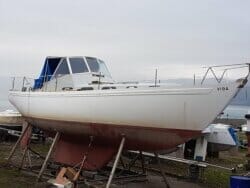
If it were me going through that much surgery on the dog house, I would simply reduce it’s hight so you can look over it when standing, and then add one or two small hatches in the top for ventilation. The Outbound 46 and our boat are set up this way and, after tens of thousands of miles including many high latitude voyages, I have found it works very well: good shelter when sitting, and great visibility and situation awareness when standing: https://www.morganscloud.com/2008/06/01/hard-dodger-for-morgans-cloud/
Then, if you want full coverage of the cockpit, go with a soft enclosure attached to a bimini top, that can be rolled up or down depending on circumstances: https://www.morganscloud.com/category/deck/cockpit-enclosure/
Thanks John,
I think we are looking at much the same thing.
One way of looking at our plans is to see the existing wheelhouse roof becoming the bimini (albeit currently with one section of solid sides) and the cut-down windscreen with “shelf” becoming the dodger (that you can look over when standing) with an opening windscreen between them.
You have your windscreen connecting the bimini to dodger at the forward end of the dodger top. We were thinking of putting it at the aft end. Our thinking is that makes reaching it to open from inside easier and uses the bimini as an eyebrow to keep rain off so improving visibility. If this section is going to be open in storm conditions the extra wind capture of the eyebrow won’t matter.
The work would strengthen the forward supports for the dodger and bimini (currently the window frames are the main support) and allow us to reduce the slab-sided and angular appearance of the grp dodger base. The aft supports are much better implemented and in good condition.
The existing enclosure was really only for boatyard use (one-piece almost impossible to put up from inside) so we will be sewing a replacement (mostly windows in several zipped sections) with better attachments. That will allow flexibility as to which panels are open or closed.
Between the bimini roof window which does provide a good view of the mainsail and the solar panels we probably have room for one small opening hatch.
Even with the current rather inadequate front supports we have been on board, in a quite exposed position in the boatyard, through several named storms (which funnel through the Menai Strait) from both forward and aft. No movement – of the wheelhouse anyway, everything else was shaking 🙂 So at least we know 50+mph winds are ok.
I suspect much of the issues around cockpit design are related to the intended market. Some of the issues you mention are issues for any boat that leaves the dock while others are only issues for boats that are sailed offshore. I am not someone who subscribes to the idea that any old boat above 30′ can be made suitable for offshore use and cockpits are just one more example of where I see important differences.
It is probably no secret that I think most boat designs are immature like proof of concept prototypes not product designs and a few things you have highlighted speak to this. The first and most obvious sign that a design was not fully detailed, there is not proper assembly documentation and/or the builder lacks proper materials management is that most boats show an amazing mishmash of fasteners that clearly show the assemblers were going and grabbing what was handy to put it together rather than having it kitted. Digging deeper though, you see much more troubling trends. Dodgers is one area where you can see how immature the design is, very few designers/builders put in any provisions for a dodger yet the majority of the boats, regardless of use case, will install one within the first year. Since the designer has not considered this, it means that rope clutches, winches, instruments, etc are all in places that can be badly compromised by one of these solutions. Interestingly, for all of their other faults, some of the big production boatbuilding companies do better in some of these regards as they realize much bigger economies of scale and actually realize that it pays to complete the design (heck, Beneteau have integrated dodgers in some of their designs these days, I don’t like how they have done it but bravo for doing it and I know that they at least have a proper BOM for their boats).
In an ideal world where all incentives are right, I think that basically all cruising boats (yes, including coastal cruisers) would have a factory option of a bolt on hard dodger. By having a single design, the designer could work in CAD to check sightlines, lay out hardware, etc and then a mockup could be built to double check this and in the end, it would all have good usability. Given how rarely people actually take down a soft dodger, hard dodgers are superior for probably 90% of owners and you could always not order it or unbolt it if you want to truck over the road or go racing or whatever. Maybe I am the only one who dreams about such things.
By the way, I think that your points are a bit of a mix of requirements and specifications. Something like visibility I see as a requirement while I see cockpit size as a specification as it is one way to meet the root requirements. The actual requirements for cockpit size are things like how many people can be seated, ability to move around, weight when flooded, etc.
I agree, although I’m not generally a fan of their boats, Beneteau have done some great work in design and standardization.
The other way a boat can end up with a really well engineered cockpit is a combination of experience, iteration, simplicity and staying on mission.
Morgan’s Cloud has the best cockpit I have ever sailed in, Perfect? No, but close.
I’m guessing the reason is that Jim McCurdy had done a lot of sailing offshore himself (a rarity with designers) and he kept it simple with the single mission of sailing efficiency the guiding principle. For example, if you don’t bring the lines from the mast aft, and don’t try and add a fixed dining room table in the middle of things, it gets way easier to have a good design. And then if you have drawn and then sailed on a bunch of boats like Jim had when he designed MC, you get better and better, particularly if your a bit crusty and tend to dig your heals in about the important stuff, as Jim also did.
I also agree on the desirability of hard dodgers as standard. That said, there are benefits to the hard/soft approach we have too. More coming on that.
Hi John and all, I would like to suggest that, when underway, there can be too much cockpit protection. There is something to be said for being a little uncomfortable. The on-watch crew should always be harnessed up and dressed to go to the foredeck. Much of the time, this is layers with full foul weather gear, especially at night. Cockpit protection can tempt one to underdress. Moreover, good watch keeping means you have good contact with the elements: eyes not blinded by reading, at least one ear not blocked with ear buds, not “zipped in”, and with easy access to the outside world for a clear look-around. Like many comfort and labor savings devices for the sailing community: the increased physical ease brought by cockpit protection is offset by an increased demand for mental diligence and discipline. My best, Dick Stevenson, s/v Alchemy
Dick, I’m not sure one rule for all situations and climates works. For example Coastal areas vs mid ocean. Tropics vs high attitudes. Weather conditions. What equipment you have. etc etc.
I would concur. We have a pilothouse helm and an aft deck “sailing” helm, which is not really so comfortable, but is quite safe with plenty of places to tether to (and from). If we are actively steering, we stand in what isn’t much bigger than a footwell, but which has six winches to hand, three a side. We can look forward across the pilothouse roof and nothing is blocking our view aft or to either side, although I am considering weather cloths for the spring as it will be pretty brisk here in April, I think. But there’s certainly no places to sleep as the deck is flush and there’s just steel pipe and cherry wood “park benches” outboard; we issue Sunbrella cushions for socializing in the evenings in the summer, otherwise, it’s the far more comfy saloon seating. We aren’t masochists by a long shot, but if we are sailing, we are busy doing that, and that means, as has been pointed out, with both eyes and ears and even sniffing the wind to figure out if you might be close to land.
I could not agree more. I can’t count the number of times that being at least somewhat exposed to the elements has raised our situation awareness to the point that we noticed an issue that we would not have all buttoned up, well before it became a problem.
I also agree on being dressed to head out on deck at all times.
I think I may tackle the tradeoffs in the next chapter on cockpits.
Sorry, I had to take the new comment system down for a week or so. An upgrade broke it, but since we are very close to rolling out a new and much improved site design, there is not a lot of point in fixing the old one to work with the new comment system.
I have been looking for Electronic boxes like you have in the cockpit on Morgan’s Cloud, but can’t find them anywhere, can I ask where did you buy those at?
We made them from scratch, so no source, sorry. A good fibreglass fabricator should be able to build ones like it for you.
Hi Blair, Instrument pods were, probably are, crazy expensive. And they are often not just the right size. I made mine out of Starboard. I used the grey and chose the Starboard light version as standard Starboard is fairly heavy and for this job they need little structural strength. It is easy to work and I used screws to put it together and bent aluminum stock to fabricate mounts. Took time but not skill. Eight years on they have serves well. My best, Dick Stevenson, s/v Alchemy
Hi Blair, We have been happy with ours, made by Navpod. High heat in the tropics, heavy exposure to ocean water, etc, it’s kept our chartplotter safe. Really well built. navpod.com Cheers, Morgan Henry s/v Tumbleweed
I’ve had boats I loved to stand watch on, and been on boats that felt like I was sailing with a bag over my head and manacles on my ankles.
Regarding multihulls, at least for people with my cold weather sailing habits, there is value in a salon with a good view. Unless the weather is pretty foul the windows do stay clear. The greater danger, which has caused a few high profile capsizes, is the belief that a large cat is stable and that being away from the winches in blustery conditions is acceptable. It isn’t and no multihull sailor can ever forget that. You only sit inside when the boat is severely under powered, and only for a few moments, to pick up a sandwich, warm up, and grab dry gloves.
A high cockpit is good for visibility, but it also increases motion. Forward facing seats can also be a problem. Cats have a quick motion anyway, and up on the helm seat, my back would often get sore from the side-to-side snap roll of a beam sea. If I sat low in the cockpit or in the salon, facing across the boat, it was fine. I’m sure it depends on the boat and your back.
That said, there is no substitute for a good view and good access from the helm. I don’t have a problem with looking around the dodger when need be. I’ve sailed in the snow a few times and Rainx won’t help! But you must be able to reach that corner without gymnastics, which is often not the case.
I hate cockpit tables. Either eat in the salon or spread yourselves around the rim of the cockpit. You can have a nice dinner lounging around the sides. I hate anything that gets in my way, including wheels and protruding seats and bulkheads found in some new designs. I should be able to move directly from point a to point b without obstacles and with a good hand hold at all times.
Look at the deck and cockpit as though the boat will be single handed. Perhaps that is not your intention, but it will happen occasionally, on watch, when someone is ill, or perhaps they are simply busy. If there is anything that will inhibit your ability to work efficiently through routine trimming (every tweak), tacks, sail changes, and movement back and forth to the cabin, it is a problem.
I once asked the designer about a few access problems on one of his boats. He told me “it was designed for a different kind of sailor.” I think he meant it was optimized for boat show appeal.
A lot of wisdom in that comment, thanks. Never thought of the motion issue when sitting facing forward. I bet that would bother my back and neck too, even in a monohull.
Good article…… good comments. Many important points and compromises covered.
One thing overlooked is maintaining good night vision…. specifically the negative way any instrument lighting or electronic displays in a “glass bridge” (radars, plotters, etc.) affect your night vision.
Over 30+ years at sea as an engineer on Merchant ships I spent most of my time in the engineroom…. but I also spent enough time time on the bridge to be aware of professional concerns of night visibility.
I have never seen a ships bridge where there are radar or plotter displays, or indicator lights located in the field of vision of those on watch. They distract from or destroy your night vision when you need them most…. and don’t forget the time it takes for your eyes to adapt to changes in light levels.
On a merchant ship, lighting that can affect watch standers (or lookouts) night vision is located behind the watch standers…. not in their line of sight.
Yacht cockpits or motor yacht bridges don’t have space to do that, but there are other ways to accomplish maintaining night visibility.
For instance our radar display is mounted below deck and visible from our normal position in the cockpit…. and our radar is on all the time when we are underway… and we cruised a sailboat similar to Morgan’s Cloud for years.
I’ve noticed that when doing passages on yachts with other “professional seamen” that their approach to night vision is the same as mine. Lighting in your field of vision is either turned off or covered up at night.
That’s a good point. That said, I’m a holy terror for maintaining night vision and, even so, have found that we still prefer to have the radar etc in the cockpit. Is there some degradation? Probably, but I have never found it to be significant, as long as we turn everything way, way, down at night. We have found the secret is to turn the backlight down to the point that it seems too low since after five minutes, it will be plenty bright. Anyway, we find the benefit of having the radar to hand, particularly since I think it’s important to be going up and down the ranges every five minutes, outweighs the slight night vision degradation.
That said, having instruments in the cockpit makes it vital to be able to look over the dodger when we need to, and the added benefit is that the instruments are completely blocked from our vision when in that position. I will bring that up in the next part, thanks for reminding me.
One thing that does disturb me, and that I have written about several times, is using consumer screens (phones, laptops, tablets) at night. Sure they supposedly have night modes, but they really don’t work well, unlike a purpose built radar from a company like Furuno.
Also, just about every fishing boat and smaller commercial vessel, including rescue vessels, I have been on has the radar in front of the helm.
By the way, I have written about night vision on several occasions, at least peripherally. I just did a search on the site on and got 14 hits. That said, might be time for an article dedicated to the subject—thanks again.
We “rig for night” and find the B&G plotter’s red “night mode” fairly effective when dialled back; same with the Furuno radar. I have to cut gels out for the VHF display and the motor control panel, however, because it’s a little too bright. I have never seen a way to dim this, but I bet it’s a simple potentiometer retrofit. Even so, when I go topside to peer around when motoring at night, I need a couple of minutes to adjust to my satisfaction.
No mention of tillers here, so much less to go wrong and its never going to get in your way
Check coming next above.
Am I missing the link to part 3? Somewhere near the end of the article part 2?
The next parts are in progress and not yet published. Winches is all done and we will be publishing it this coming week.
Newly minted member, and hope to be cruiser here; thanks for the great site. The more that I read the more obvious, to a newbie, it becomes that the vast majority of offshore designs are full of compromises. Just taking the 42ft HRs and Valiants for example. Two well respected and lauded blue water designs yet they both suffer from poor access to the helm, requiring climbing on and off of the cockpit seats. A feature that has come in for stiff criticism in this section of the book. I would love to hear from Dick Stevenson on his thoughts on the V42 cockpit in general as this is one of the boats that I am currently interested in.
Please keep up the good work.
Yup, that’s a fundamental: all boats are compromises so the key to a good selection is to get away from trying to pick “best” and pivot to “best set of compromises for me”.
Then we also need to think about degree when we see a compromise we don’t like. For example, in the above article the photo of the wheel setup shows a really egresses obstruction issue coupled with a grab rail that’s way too low, but, if my memory serves, the problem is not near as bad on the V42 where there is enough room to slither round the wheel on ones behind without standing on the seat, or maybe lift one leg and then the other past the wheel. This highlights how important it is to at least understand what to look for so we can pick the boat with both the least drawbacks and ones we can ameliorate.
Hi Martyn, I did not notice your request initially, but am now working on it. Are you aware there is an active Valiant web site ( https://groups.io/g/Valiant-sailboats ) where there is likely much of interest to you. My best, Dick
Hi Martyn, Welcome to the site. The Valiant 42 cockpit has worked well for us for pushing 70,000 miles and 20 years, 12 of which were full time live-aboard. It should be remembered that it is on a 40-foot boat that is designed for blue water sailing. It is common on the 42 to have the factory-made hard-top dodger with canvas sides, and it is what I know, so all comments are with that in mind. I believe it is also common on the 42’s to have first and second reefs lead back to the cockpit and that is also what I have. And the factory usually only has one good sized primary for the jib sheets, also my case. My take: The cockpit is small, especially when compared to modern designs. Bob Perry, to my mind, made few compromises to blue water safety which will be appreciated when considerable water finds its way into the area, a relatively rare event. The down side is entertaining: The V-42 well portrays the maxim: drinks six, feeds four and sleeps two. The hard top is really wonderful: it is strong enough to stand on and provides very strong hand-rails on the cockpit end and, especially important, on the side of the hard-top for getting past the dodger when going forward. The canvas sides have proved strong enough to deal with the occasional green water that has found its way down the deck. The first two mainsail reefs are led back to the cockpit. This has worked well for us as I like that a reef (or two) is able to be put in single-handed without going on deck to the mast and in the protection of the cockpit (see John’s writing for another opinion). Both my wife and I can do this alone and the off-watch is left to sleep. This takes pre-preparation: all lines are accurately marked so a close approximation of the reef is accomplished easily. Then there is a bit of fine tuning where one needs to pop one’s head out from under the hard-top to observe the shape of the sail and the positioning of lines. Finally, the “spaghetti” of lines that inevitably comes up as a problem with this design has been easily dealt with by putting all excess line (usually just the mainsheet, but adding up when reefs are in place) down the companionway to live behind the companionway ladder on top of the engine box. This has the added plus of ensuring that all lines run free when needed. Generally, V42s come with one primary and no secondary and this has led to some creative solutions (and occasional cussing) as we figure work-arounds. Designed from the factory, secondaries are possible, but the real-estate for a secondary as an after-market solution was more than we wished to do. So, in most everyday life, this was no problem (and we use an asym a fair amount). I suspect if you came from a racing background (I do not) this will be more of an issue. Movement around the cockpit is easy and quite safe: everything is close-at-hand (including good handholds such as on the aft end of the hard-top): a benefit of small size. John is correct in his comments about the ease of moving past the wheel. Valiants are what I think of as “low slung”: they live in the water, not on the water, and have much less freeboard than other designs, so, my take, is that their movement is smoother, more predictable and less herky-jerky, and moving around the cockpit is made safer for these habits. I am sure I have forgotten items, so please come back with questions/thoughts/comments. My best, Dick Stevenson, s/v Alchemy
Hi Martyn, In re-reading you post, I notice you are looking at HR42s. In our time in Europe, we rafted on HR42s a number of times. We were struck by the difference in freeboard: my sense was that stepping onto the HR we needed to step up about 18 inches: 18 inches felt like just a huge difference which felt substantiated when we were entertained and had a tour: the HR just felt like a much bigger boat. This is partly explained by the Valiant actually being 40 feet (the added 2 feet are bowsprit/anchor platform, not hull), but the overall design concept felt much bigger. Not sure what this translates into when it comes to sailing characteristics. My best, Dick Stevenson, s/v Alchemy
Sorry for my slow response; still learning to navigate the site, let alone anything else! With all of the positive comments that seem to follow the V42 around I figured that there can’t be too many serious draw backs with the boat as a capable and safe offshore design.
Thanks for the welcome.
I would very much appreciate being able to tap into your wealth of knowledge gained from a long and close association with the Valiant but am not sure if this section of the site is the place for that. Is there a more suitable platform?
Hi Martyn, Many subjects are well covered in the writings of AAC and pertain to all (or most) offshore sailing boats of which a Valiant is certainly one. I would love to wax enthusiastic on AAC with regard to Valliant’s grandly fulfilling their off-shore cruising aspirations, but, questions specific to the boat are probably best addressed to the Valiant web site (with some other Bob Perry designed boats) that is quite active and where there are a wide range of experience with the boats: Newbies to old hands ( https://groups.io/g/Valiant-sailboats ). Most subjects can be searched in the archives and questions can be asked. (There is some sort of sign up -no $$- but I forget the details.) My best, Dick Stevenson, s/v Alchemy
Thanks Dick
I will indeed sign up.
I wonder if you would comment on the hardware used to attach your cockpit jacklines in the photos above. Looks like smallish U Bolts that wouldn’t meet the load requirements you advocate in your Person Overboard eBook. Thanks.
The attachments are not U bolts but quite substantial pad eyes. And note the load path would be in an orientation that would be comparatively low stress for the fittings.
That said, I don’t remember who made them so it’s perfectly possible that I made a mistake, particularly since we fitted them some 30 years ago when the boat was new to us. I’m far from perfect. Anyway, my recommendation was, and is, to use fittings that meet world sailing standards of 4500 lbs.
On the J/109 I’m using these from Wichard https://marine.wichard.com/en/stainless-steel-hardware/fastenings/folding-pad-eyes/single/part-6605 which are well over the standard.
In fact one could meet the standard with the next size smaller since world sailing spec break load, not SWL: https://www.sailing.org/inside-world-sailing/rules-regulations/offshore-special-regulations/
Hello John,
As ever, I enjoyed reading your articles!
Single or twin helm? Say, a boat with a cockpit similar to the Boréal 47.2. but ~55′ LOA: what is your recommendation for long-distance cruising?
Thank you! Robert
I’m a guy who always leans toward the least complex option so for me it would be single helm. In fact I liked the Mk1 Boreals with single wheel and halyards at the mast way better than the Mk2s. To me the Boreal 55 Mk1 is the best of them: https://www.morganscloud.com/category/boat-design-selection/boreal/boreal-52-55/
Closely followed by the 47 Mk1: https://www.morganscloud.com/category/boat-design-selection/boreal/boreal-44-47/
- BOAT OF THE YEAR
- Newsletters
- Sailboat Reviews
- Boating Safety
- Sails and Rigging
- Maintenance
- Sailing Totem
- Sailor & Galley
- Living Aboard
- Destinations
- Gear & Electronics
- Charter Resources
- Ultimate Boating Giveaway

Made for Shade: Cockpit Cover Options
- By Ralph Naranjo
- August 1, 2024
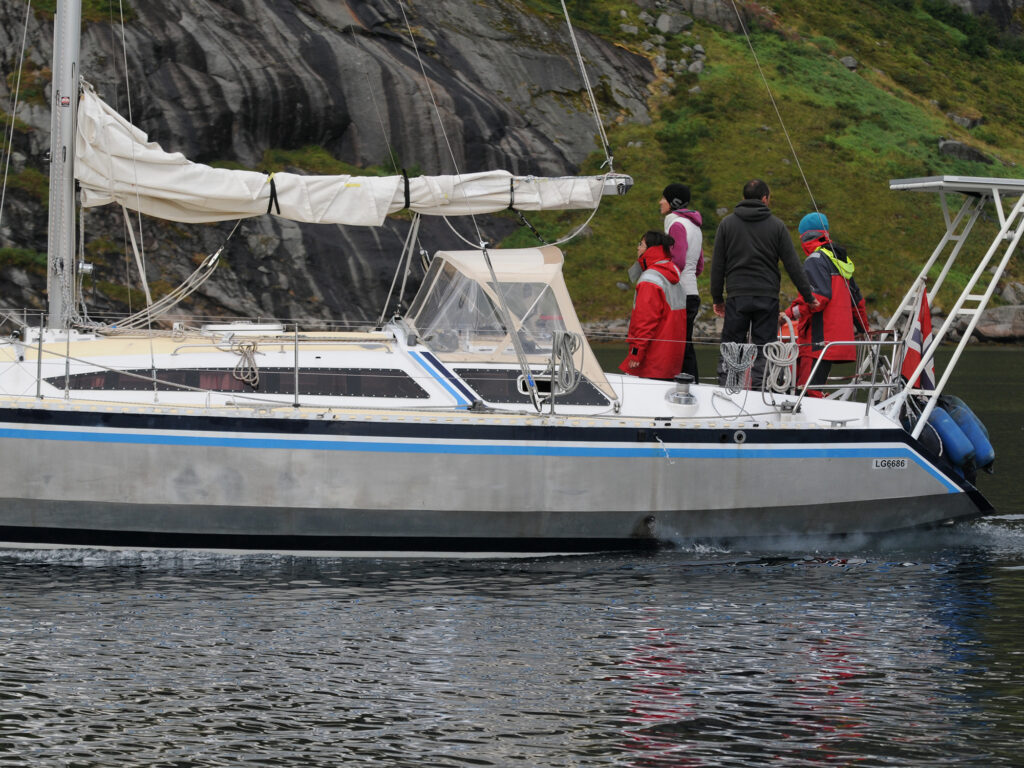
Canvas was once the common thread that sailors used for shade. Today, it has evolved into superfabrics such as Sunbrella and WeatherMax. There’s now an artful blend of ergonomics, careful stitching, and recognition that when it comes to the crew soaking up sunshine, less is better.
Designs vary, and coming up with the right-size dodger, Bimini top, awning or full cockpit cover takes careful consideration. Racing sailors embrace small, collapsible spray hoods that shield little more than the companionway. A more expansive covering could hinder sailhandling and add windage that might carve 0.042 of a knot off boatspeed. At the other end of the spectrum, cocoon advocates maximize their canvas footprint.
Most cruisers find the right compromise to be a medium-size dodger and Bimini top combo. The latter can easily be folded, minimizing windage in heavy-weather situations.
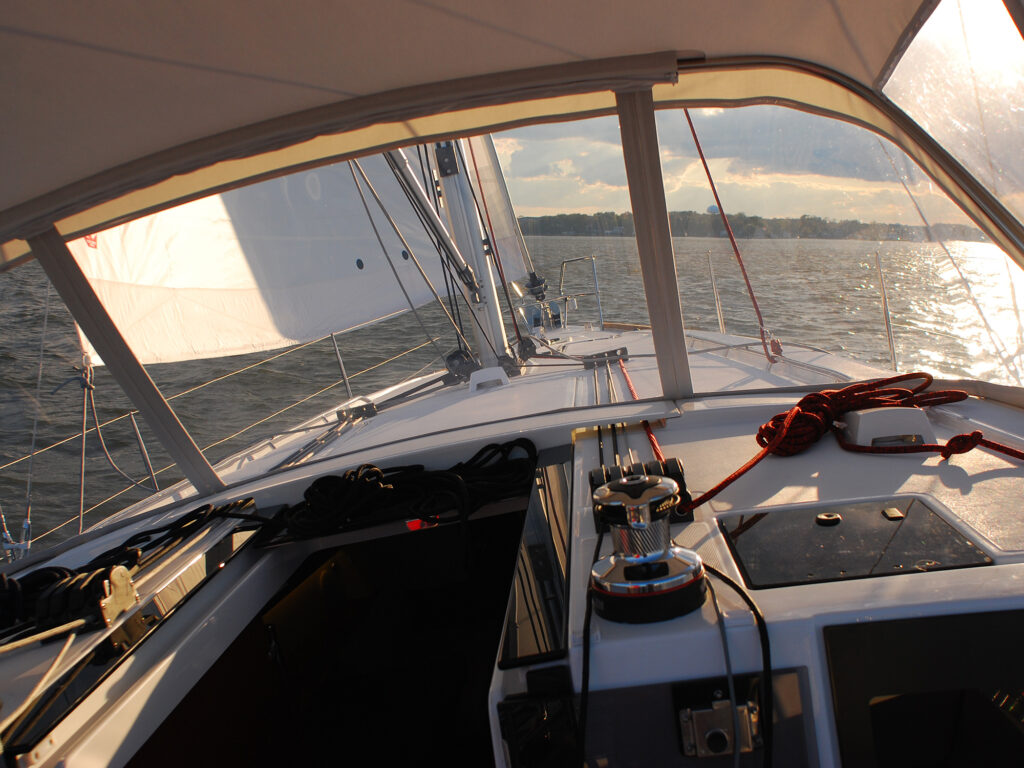
Dodgers and smaller spray hoods also improve ventilation, a feature that’s as welcome in the galley as it is in a quarter berth. In colder climes, the person on watch can tuck up under the dodger and still maintain 360-degree visibility. This type of spray hood won’t interfere with sail setting, reefing, steering or other vital aspects of boathandling. The addition of zippered windows guarantees ventilation in light air.
Another useful attribute associated with a well-made dodger can be the series of handholds leading in and out of the cockpit. Fabric covers can be snapped over the windows when the boat is at rest, protecting the clear plastic and greatly extending its life span.
A dodger works in harmony with a sailboat’s deck layout. In many cases, a canvas pro will modify the standard design to cope with halyards that have been led aft, and with winches and rope clutches linked to the line handling. While a one-shape-fits-all approach can hamper winch-handle rotation or make rope clutch clusters harder to operate, a good canvas loft will take these issues into consideration and design the dodger accordingly.
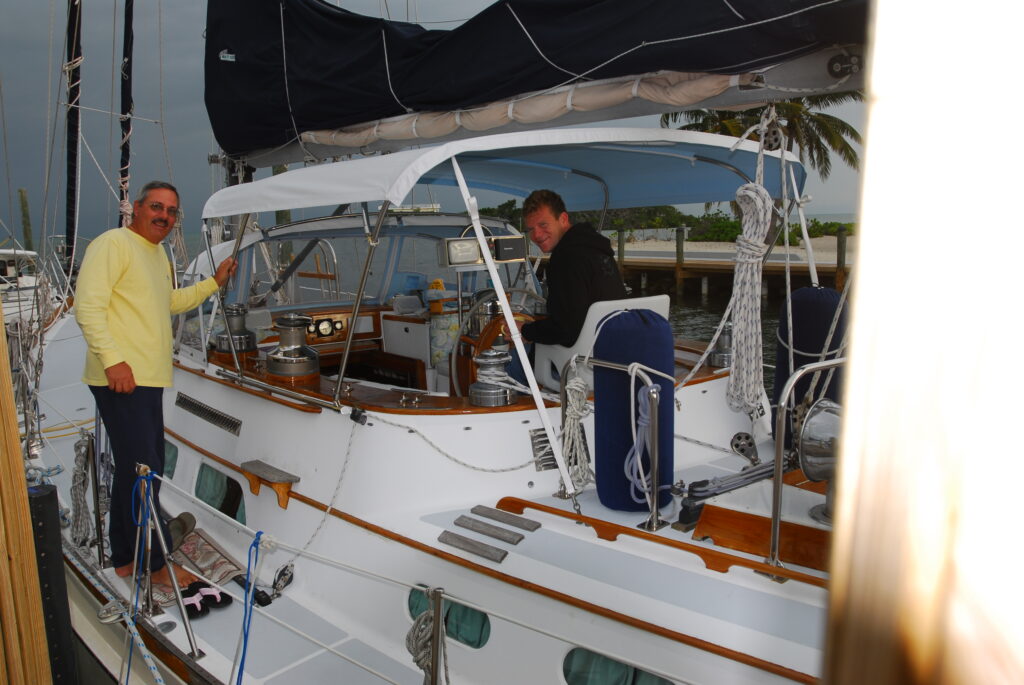
Bimini tops, named after a particularly sunny spot in the Bahamas, can add shade while welcoming the breeze. These tops can be quickly raised or lowered via a set of wicketlike bows hinged at the base.
However, sailing under such a large cover has a few challenges. The first is mainsail handling—setting, dousing, reefing and trimming. Bimini tops with built-in, overhead “sail trim” windows often fail to provide enough of a wide-angle view to keep tabs on leech telltales and those near the luff. Things get even more complicated with a summer thunderstorm or an offshore cold front, when the need to reef sails in a hurry is the priority, and an oversize Bimini top spells trouble.
The best solution, especially for those making offshore passages, is a smaller Bimini top—one that works in concert with a dodger and can be easily secured before a heavy-weather encounter.
A full cockpit enclosure might appear to offer greater protection from wind and sea, and a well-supported structure can withstand substantial wind gusts, but when the onslaught includes breaking waves, the “Florida room” is likely to lose its appeal. However, it remains a legit option for inshore cruising during the shoulder seasons or while wending down the Intracoastal Waterway. Remember that in a gale or storm at sea, the extra windage and large surface area become a significant hazard.
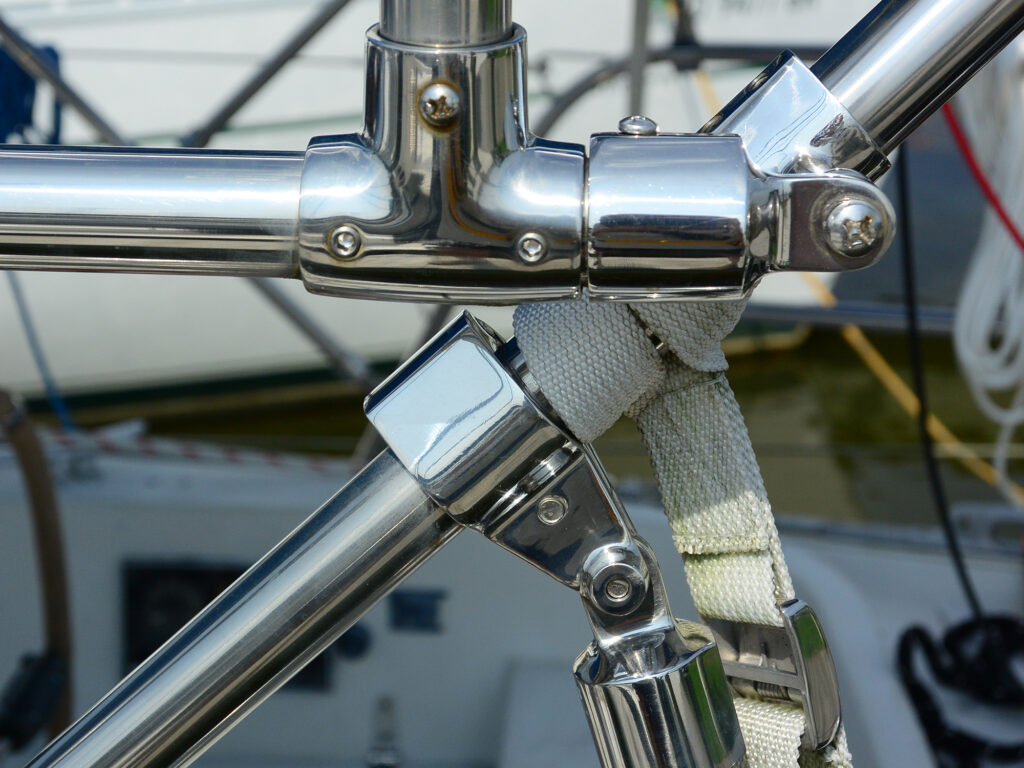
Another key consideration involves the stainless-steel tubular arch geometry. It adds shape and structural support to the canvas cover, and determines where the crew enters and exits the cockpit. The best dodgers and Bimini tops take advantage of pathways where nonskid surfaces prevail, and where handholds are abundant. A major problem with many full cockpit covers is their extreme rail-to-rail design and how outboard the entry and exit points become.
Hardware used to secure the canvas and the bows must be carefully attached to the deck. In many cases, the sailboat’s designer never envisioned anything being attached in such locations, and the core material, sandwiched between the top and bottom FRP skins, was not meant to be penetrated. It’s important to seal the core with epoxy and carefully bed hardware with marine sealant. Major support stanchions should be through-bolted, and might require topping and backing plates.
If you’re in the market for canvas-work, note that most lofts develop skills building covers that are appropriate for their local waters. Sailors who intend to cross oceans should look for rugged, heavily reinforced, lower-profile dodgers with mounting hardware that’s ready to shrug off breaking Gulf Stream seas.
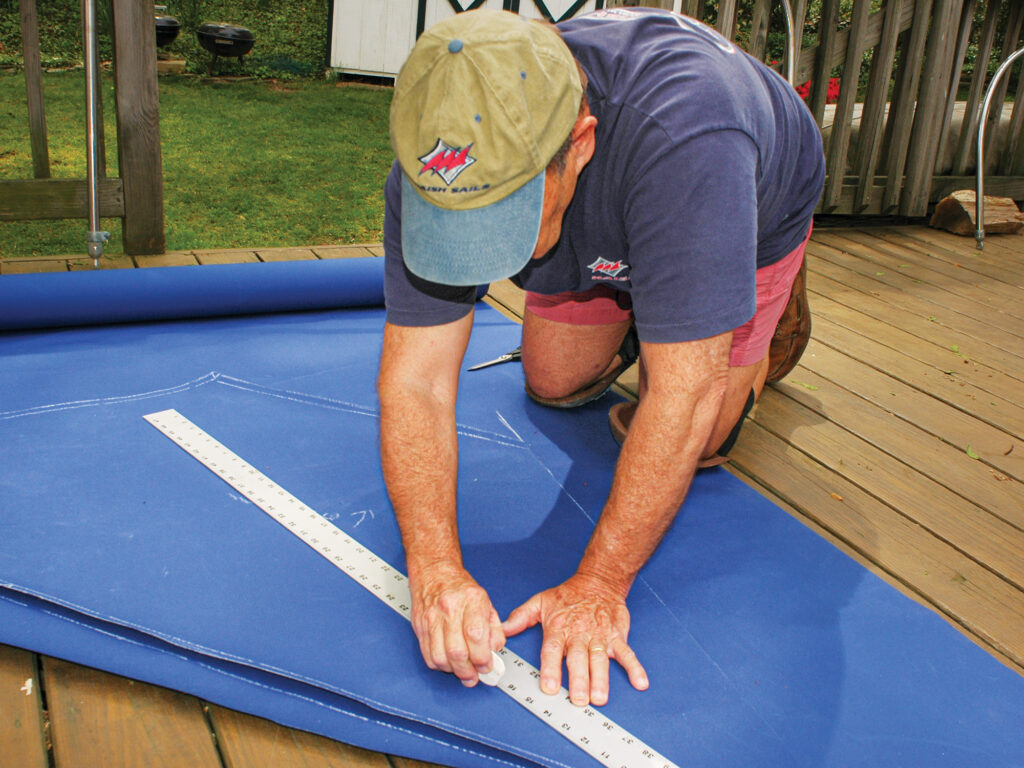
Do It Yourself
Many cruising sailors enjoy spending time guiding canvas under a sewing machine needle as they stitch their way to a new awning, dodger or Bimini top. Those with a machine might find lee cloths or a mainsail cover to be the best starting point, but for sailors ready for more of a challenge, a DIY dodger or Bimini-top project awaits.
There’s lots of guidance, kits, tools and sewing machines available from Sailrite. Check local sailing and seamanship schools for how-to courses in marine canvas-work.
Measure carefully, create paper patterns, and then set up the stainless-steel tubing framework that defines the cover’s shape. Do a fit check of the top and side panels. Add assembly info with tailor’s chalk. Terms such as top, bottom, forward, aft, port and starboard, along with marks where panels attach, will prevent assembly snafus. They’ll also ensure that hardware and fasteners will be mounted in the right locations.
Tubular stainless-steel bows define the shape and size of the dodger or awning, and the most noticeable characteristic is defined by the radius of these bows. Hard bends deliver more room under the dodger, while a smooth radius creates a spray hood with less windage, a lower profile, and less room for crew seeking shelter.
One value of a kit dodger is that the dimensions are set, and the curve of the bows matches the cut of the fabric. Sailrite provides meticulous directions, and its online videos make DIY projects user-friendly. You can reuse existing stainless-steel bows and make a new, identical cover. The old fabric will act as a pattern and be instructive for assembly.
I’ve grown quite fond of sewing Sunbrella and WeatherMax fabrics. Sunbrella is a bit easier to work with, while WeatherMax is a top performer when it comes to strength, durability and longevity. Double-sided tape, spring clamps and a staple gun help to hold panels in place while sewing.
- More: DIY Projects , Hands-On Sailor , How To , On Deck , Print August 2024
- More How To

Best Practices for Boat-Show Shopping


Grease the Wheels of Your Boat: A Guide to Proper Lubrication

A Bowsprit Reborn: A DIY Renovation Story

Rigging Redo: Our Switch to Synthetic
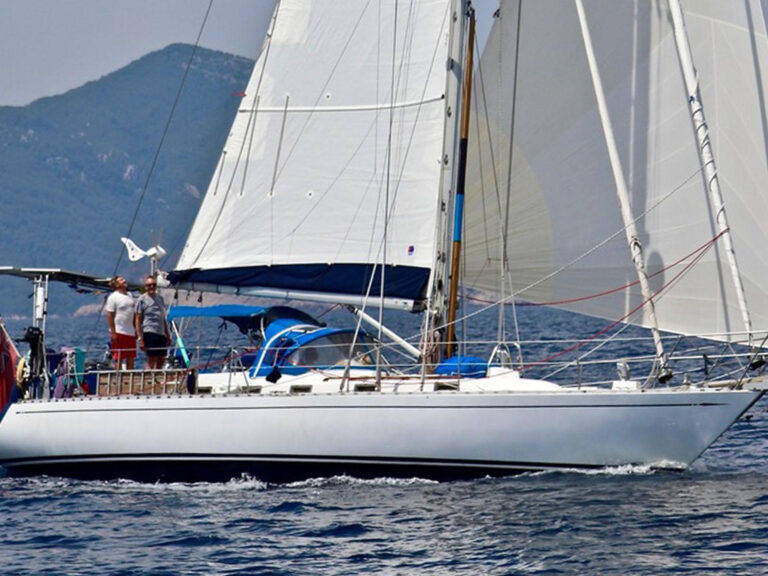
Pre-Owned: 1988 Hylas 47
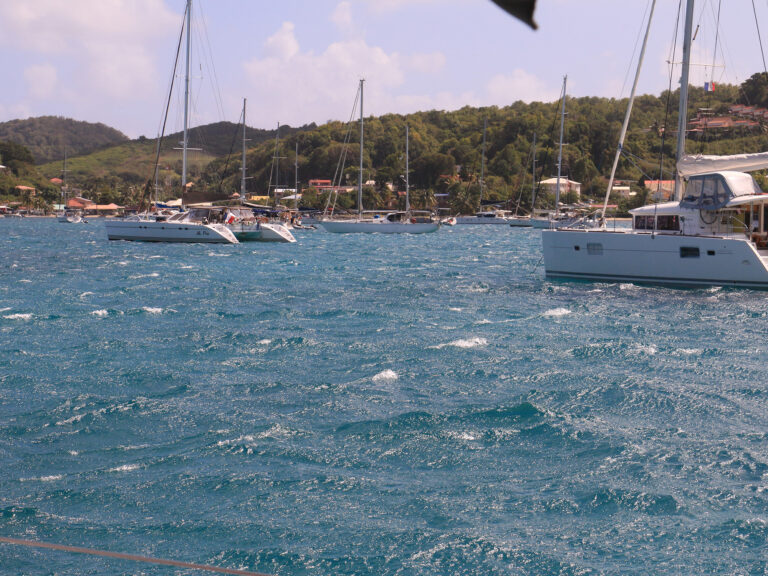
Understanding Wind in the West Indies
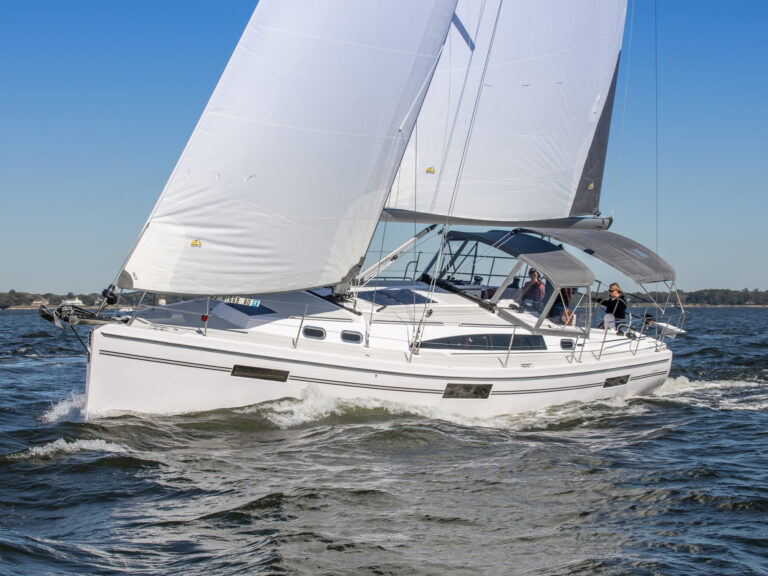
Catalina Introduces the 6 Series
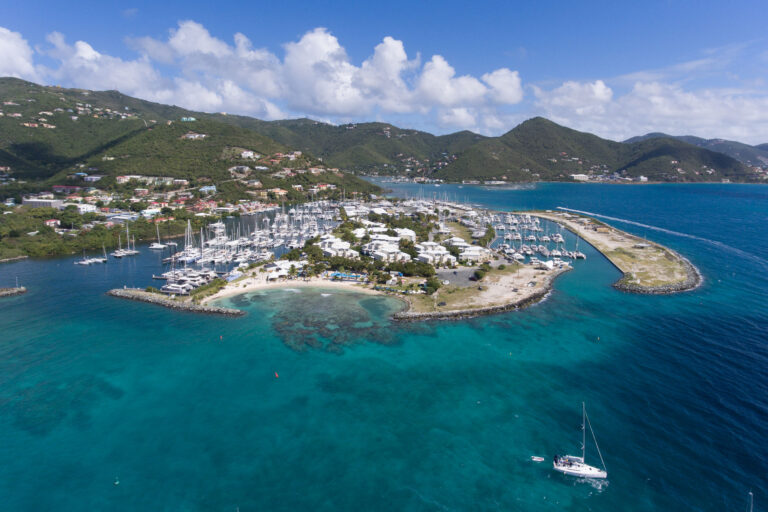
At Your Service
- Digital Edition
- Customer Service
- Privacy Policy
- Terms of Use
- Email Newsletters
- Cruising World
- Sailing World
- Salt Water Sportsman
- Sport Fishing
- Wakeboarding
- New Sailboats
- Sailboats 21-30ft
- Sailboats 31-35ft
- Sailboats 36-40ft
- Sailboats Over 40ft
- Sailboats Under 21feet
- used_sailboats
- Apps and Computer Programs
- Communications
- Fishfinders
- Handheld Electronics
- Plotters MFDS Rradar
- Wind, Speed & Depth Instruments
- Anchoring Mooring
- Running Rigging
- Sails Canvas
- Standing Rigging
- Diesel Engines
- Off Grid Energy
- Cleaning Waxing
- DIY Projects
- Repair, Tools & Materials
- Spare Parts
- Tools & Gadgets
- Cabin Comfort
- Ventilation
- Footwear Apparel
- Foul Weather Gear
- Mailport & PS Advisor
- Inside Practical Sailor Blog
- Activate My Web Access
- Reset Password
- Customer Service

- Free Newsletter

Dufour 44 Used Boat Review
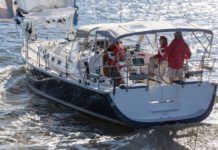
Blue Jacket 40 Used Boat Review

Catalina 270 vs. The Beneteau First 265 Used Boat Match-Up

Ericson 41 Used Boat Review

How to Create a Bullet-Proof VHF/SSB Backup

Tips From A First “Sail” on the ICW

Tillerpilot Tips and Safety Cautions

Best Crimpers and Strippers for Fixing Marine Electrical Connectors
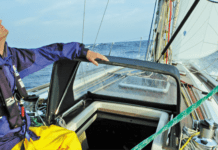
Solving the Dodger Dilemma

Polyester vs. Nylon Rode

Getting the Most Out of Older Sails

How (Not) to Tie Your Boat to a Dock

Fuel Lift Pump: Easy DIY Diesel Fuel System Diagnostic and Repair

Ensuring Safe Shorepower

Sinking? Check Your Stuffing Box
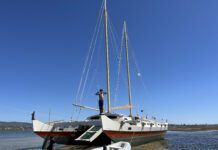
Why Choose the Wharram Design?
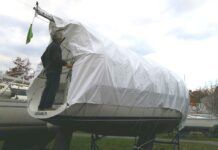
Winterizing: Make It Easy With Checklists

Boat Improvements for the Technically Illiterate

What Do You Do With Old Fiberglass Boats?

Stopping Holding-tank Odors

Giving Bugs the Big Goodbye

Galley Gadgets for the Cruising Sailor

The Rain Catcher’s Guide

Sailing Gear for Kids

What’s the Best Sunscreen?

UV Clothing: Is It Worth the Hype?

Preparing Yourself for Solo Sailing

R. Tucker Thompson Tall Ship Youth Voyage

On Watch: This 60-Year-Old Hinckley Pilot 35 is Also a Working…

On Watch: America’s Cup

On Watch: All Eyes on Europe Sail Racing

Dear Readers
- Boat Maintenance
- Sailboat Reviews
Two Ways to Build a Teak Cockpit Grating
If you have power tools, do it the pro way. if not, let the lumber dealer do most of the cutting and just fit pieces together..
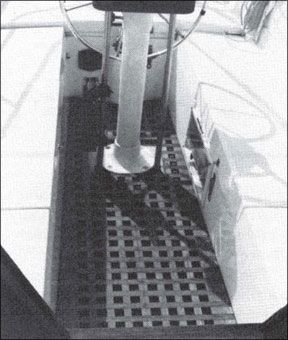
A snug-fitting teak grating adds safety and a touch of class to the cockpit of any boat. Spray or rain runs under the grating to the cockpit drains, leaving a reasonably dry footing for hopping about the cockpit as you haul in sheets to tack or trim sails. Unfortunately, you can’t buy a grating off the shelf to fit your boat, and having a grating custom-built can be acostly and nerve-wracking experience. The solution to both of these problems: build your own grating. Its a fun job that can keep you busy for a few winter evenings, and you can build it for less than one-third the cost of a custom-built job. And whether you build your grating the professional way by gluing cross members into dadoes cut in longitudinals, or the no-tools way by gluing pieces of teak on top of each other, the end result will be very satisfying-something about which you can be proud to say, I built it myself.
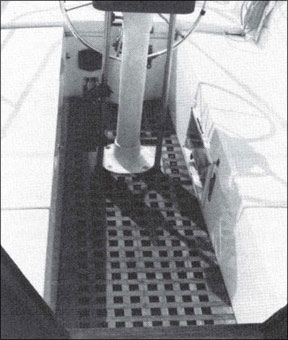
Making the Cardboard Template
No matter how you build your grating, a carefully made cardboard template is necessary to ensure a good fit. Take some large pieces cut from corrugated cartons-the larger the better-and cut them to fit loosely into the cockpit area. Cut the cardboard to fit loosely around the wheel-steering pedestal if your boat is so equipped. If more than one piece of cardboard is needed to cover the entire cockpit, tape the pieces together with wide masking tape. Apply the tape to both sides to join the pieces securely. Make two half templates cut to fit around the steering pedestal, or two full-length half templates for a tiller equipped boat with no obstructions on the cockpit sole (see Figure 1).
Measure for a centerline at the forward and aft ends of the cockpit and draw a pencil line all the way down the center of the cockpit sole. Place short lengths of pine 1×3 along the edges of the cockpit to raise the templates above the cove formed in the fiberglass where the sole meets the sides and ends of the cockpit. Place a additional piece of wood under the center of the templates so that you can walk and kneel on the templates without pressing them down.
Align the straight edge of one half template with the centerline and fasten it in place with push pins or thumbtacks pressed into the lx3s, then lay straight strips of cardboard about 2 or 3 three inches wide along the edge of the template, press them against the vertical surface and tape them in place. Tape these strips in place all along the side and ends of the cockpit to develop an accurate pattern of the cockpits dimensions. Check occasionally to be sure that the large piece of cardboard doesn’t shift away from the centerline.
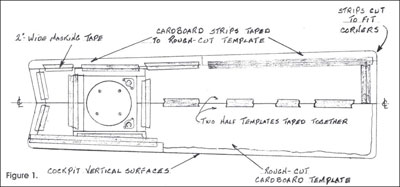
Place the second half of the template in position so that its straight edge is in contact with the straight edge of the opposite half and thumb tack it in place. Repeat the taping of strips of cardboard along the outer edges of this half template. If there is a steering pedestal, tape strips of cardboard around the pedestal to form a square opening about l/4 inch from the pedestal base and guard rail stanchions. The end result of this effort will be an extremely accurate template in two halves outlining the full dimensions of the cockpit at about one inch above the cockpit sole.
Check again to be sure that the cardboard strips make contact with the vertical surfaces on all sides of the cockpit, then carefully lift the two halves and apply tape to the underside of the templates to hold the edge strips in place. Handle the templates carefully as you take them home to begin work on your grating.
Laying Out the Pattern
On a large table or workbench, lay out the two half templates, align their ends and tape them together with short strips of tape every foot or so. You may notice that the aft end of the template is narrower than the forward end simply because cockpits typically are wider amidships than at the stern.
Measure in one inch from the edge on both sides of the template at the aft end and make a pencil mark. Measure the distance between this pencil mark and the center joint between the two halves and mark this distance (A-B) on the forward end. Connect these two marks on each template half with a line drawn with a straightedge or a straight board long enough to reach from end to end. This establishes the shape of the tapered pieces that frame the grating along each side (see Figure 2). The rudderpost housing may protrude into the cockpit, requiring the aft end of the grate to be notched to fit. Also cut U-shaped notches in the corners as necessary to prevent restricting the flow of water through the cockpit drains.
Measure two inches from the forward end of the templates at both sides and draw a line across the template to establish the size and placement of the end pieces that fit snugly against the companionway bulkhead. Note that the corners are round to fit the curve of the fiberglass where the bulkhead meets the vertical surface of the sides.
With all four edges of the grating laid out, you now have a long rectangle of space inside the edges to be filled with l-inch teak strips, crisscrossed with approximately l-inch spaces between them. By varying the sizes of the spaces slightly, you can make the grating come out even. For example, if the space between the inside of the tapered edge strip and the centerline turns out to be 7-1 /2 inches, then four l-inch spaces, three l-inch strips, and one l/2-inch strip along the centerline would work out very well. An S-inch space between the edge strip and the centerline calls for an increase in the spacing size from 1 inch to l-1/8 inches to make the grating come out even. Smaller variations can be worked out by trial and error, using dividers to vary the spacing between the strips until all the spaces are uniform. On the other hand, the width of the tapered side pieces could also be increased to help produce an even spacing of the strips.
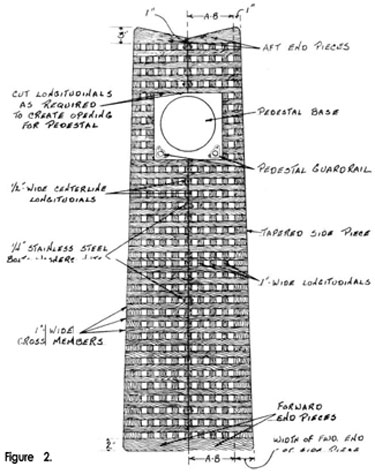
Using the same principle, lay out the spacing for the cross members running from the centerline to the sides of the grating. Start with whatever spacing worked out for the longitudinal strips, then vary the spacing slightly so that the cross members come out even from end to end. Only very small variations are needed for the spaces between the cross members because even a 1/32-inch increase in spacing multiplied by the 30 or so spaces from end to end adds up to a difference of about an inch in the overall length of the grating.
The Professional Method
If you have power tools, particularly a table saw or a radial arm saw, and a disc sander, youre well equipped to build your grating the professional way. Although not as simple as the no-tools method which well discuss later, the professional method is still a fairly simple process of gluing cross members into dadoes cut in the longitudinal strips and tapered side pieces.
Begin by totaling up the number of l-inch-wide longitudinals running from end to end in your grating layout, plus the two tapered side pieces. Allow about l/&inch for saw kerfs and buy enough 5/4 teak (about l-l/B inches actual thickness) to be cut up for these parts. Next count the total footage for the l-inch-wide cross members, plus the two end pieces and buy l/2-inch teak (l/2 inches actual thickness) for these parts. Buy about 10 percent more than you need.
Rip the 5/4 teak into the number of l-inch longitudinals required, plus two l/2-inch-wide longitudinals which, when joined at the centerline will make a l-inch strip. Then cut the two tapered side pieces to size.
Lay all of the pieces out on the templates and carefully mark the location of the l/2-inch-deep dadoes that must be cut for the cross members. Clamp all of the parts required for each half of the grating together and cut the dadoes through all the parts at one time for maximum accuracy. A dado cutter will speed the job, but teak is a dense wood that dulls ordinary steel blades in a surprisingly short time, so making repeat cuts with a carbide-tipped saw blade is recommended.
Start cutting the dadoes near thecenter of the pieces and work your way towards the ends until the clamps get in the way. Remove the clamps and press a few l-inch cross members into the dadoes already cut to maintain the alignment, then continue cutting dadoes to the ends of the strips.
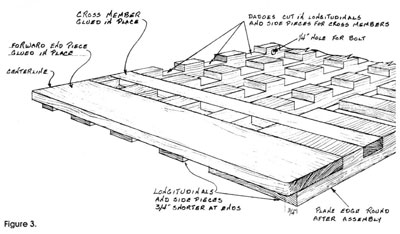
Now lay out the tapered edge piece and longitudinals in their proper positions on one half the template and press a few l-inch cross members into the dadoes for alignment, making sure that boththe longitudinals and the cross members are in line with the layout lines on the template. Cut the end pieces to shape from l/2-inch teak and glue them into the dadoes cut inthe ends of the pieces (see Figure 3). Use epoxy or resorcinol glue to create strong, water-resistant joints in your grating. Use weights such as pails of water, cans of paint, or olddoorstops, anything that will put at least 10 or 15 pounds of pressure on the glue joints while they dry. Clamps are impractical as you are working on the flat surface of the template. I used lead blocks, antique cast-iron irons, and even a couple of railroad brake shoes that I found along the tracks to press the glued parts together, and they worked fine.
Next, glue the cross members into the dadoes, setting them flush with the outer face of the l/2-inch longitudinal at the centerline and allowing them to protrude slightly beyond the tapered edge to be planed flush later. Work your way from one end to the other, using your weights to press the cross members down into the glue. If you run out of weights, take a break for an hour or so, then continue gluing.
When all the cross members are in place and the glue has dried, put a weight on each end of the half grating and place the parts for the second half alongside so that the overall alignment is perfect. Then glue the end pieces and cross members in place, weight them down, and let them dry.
At this point, your professionally-built teak grating is complete except for rounding off the bottom edges of the tapered side pieces to fit the curved corners of the fiberglass cockpit, sanding the ends of the cross pieces flush with the side pieces, and finish-sanding the top surface of the grating.
RELATED ARTICLES MORE FROM AUTHOR
Leave a reply cancel reply.
Log in to leave a comment
Latest Videos
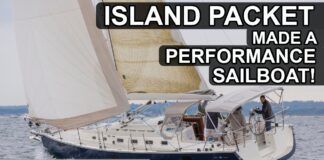
The Performance Sailboat from Island Packet: Blue Jacket 40 Boat Review

Top 3 Winter Boat HACKS!

Cabo Rico 34 Boat Review

Super Shallow Draft Sailboat: The Leeboard Sharpie
Latest sailboat review.
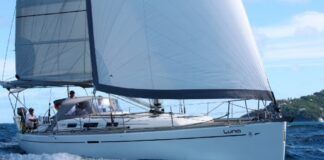
- Privacy Policy
- Do Not Sell My Personal Information
- Online Account Activation
- Privacy Manager

IMAGES
VIDEO
COMMENTS
A cockpit that works well underway may be confining in port, or another vessel with a patio-size stern may be altogether dysfunctional at sea. ... A folding wheel is also a popular option on narrow-cockpit boats. The wide patio-like cockpit of the Beneteau Sense 43 (middle) relies on a centerline hand rail and grab rails to afford security ...
The size of a boat is no indiction of the cockpit size. You'd have to "try them on for size". Stu Jackson. Feb 26, 2004 22,841 Catalina 34 224 Maple Bay, BC, Canada Jan 25, 2015 #4 Ron's right. We took our cockpit cushions off our C22 and moved them to our C25.
Sep 27, 2013. #3. You will find boats of unequal length with equal length cockpits, as well as boats of the same length with different sized cockpits. Generally speaking, a 35 foot boat will likely have a bigger cockpit than a 25 foot boat, but there are many factors that dictate the designer's choice of cockpit size.
#4 Catalina 387. The seats on the Catalina 387 are 9 feet long and able to seat about 14 friends (if you have that many!) This is a really big cockpit for a sailboat of this size and is definitely one of the best options on this list.
Catalina C-22 MK-II Parrish, FL. May 5, 2012. #2. Cockpit should be very close to being the same. Given a choice, hands down pick the 87 model. No wood in the hull below the waterline, Very improved safe gas locker so you don't have to worry about gas fumes in the hull, both have cockpit lockers on the starboard side, better cockpit draining ...
The H326 cockpit seems large for a 32' boat. It can fit 5 comfortably and up to 7 well with the pushpit seating. I actually think they went too far in trying to make the cockpit larger. As it runs aft the cockpit widens leaving no foot room on the deck where Hunter put the gate.
The cockpit on the Release 390 Walkaround is all business. Gerards adds that gunnel height is key. "Again, that depends on the size of the boat," he said. "With larger sportfish boats I can make it a little bit taller, but you must be careful because it's harder to grab a billfish or a line if the gunnel is too high.
The galley is fantastic for a boat of this size, with two very comfortable sea berths in the saloon, and at anchor, there is relaxed seating for 4-6 people at the table. ... Fast, safe, comfortable cruising sailboat. Large cockpit, wide side decks, lines led aft, four deck winches 6' headroom below, complete galley, enclosed head (unused ...
Moderate volume and adequate drainage. For an aft-cockpit boat, the most efficient drainage is through the transom. A couple of 50mm diameter holes here will drain a moderately sized sailboat cockpit inside two minutes; A bridgedeck to at least the height of the seats, which not only reduces the volume of the cockpit well but also provides a ...
S# first appeared (that we know of) in TellTales, April 1988, "On a Scale of One to Ten" by A.P. Brooks . The equation incorporates SA/Disp (100% fore triangle) and Disp/length ratios to create a guide to probable boat performance vs. other boats of comparable size. For boats of the same length, generally the higher the S#, the lower the PHRF.
A Chrysler 22 or 26 might suit your needs. A 22 has adequate sitting head room down below, while the 26 has standing head room. They stopped making them in 1980, but you can still find them fairly cheap. They sit at least 4 in the cockpit and sleep up to five. 22 has a porti-poti and the 26 an enclosed toilet area.
how much longer is the cockpit in a capri 16.5 than a 14.2? The best thing for you to do is go to sailboatdata.com. They list all the specs for most models manufactured over the years...their information is reliable.
The suffix 'C' is for center cockpit. Shoal draft: 3.92'/1.19m. Sailboat Forum. View All Topics: ... SA/Disp (100% fore triangle) and Disp/length ratios to create a guide to probable boat performance vs. other boats of comparable size. For boats of the same length, generally the higher the S#, the lower the PHRF. Under 2 - Slow, under powered.
To prevent downflooding, a balance must be maintained among cockpit size, drainage capacity, bridgedeck height and companionway strength. Thanks to their distance above the water and the open nature of their cockpits, multihulls were incrementally moving toward eliminating bridgedecks altogether, opting instead for a sliding-door runner between ...
Center Cockpit sailboats are larger size, sailing vessels generally used for time-honored sailing activities such as overnight cruising and day sailing. These types of vessels can range in size, with the shortest vessel now listed measuring 30 feet in length, up to the longest vessel listed at 59 feet long. ...
The Outbound 44/46 cockpit may look small and cramped at the wharf, but scores high offshore with great visibility, shelter, and ergonomics. There are few areas on any boat that are used for more diverse tasks than an offshore sailboat cockpit. Everything from lounging on a quiet day at anchor to handling a fast-moving emergency at sea with a ...
The cockpit seat faces (or footwell area) should not be much more than about 28″ to 30″ apart or you may not be able to brace your feet when heeled. The minimum footwell width is 24″. Footwells less than 27″ wide, however, do not allow people to comfortably sit directly opposing each other.
The cockpit seat faces (or footwell area) should not be much more than about 28″ to 30″ apart or you may not be able to brace your feet when heeled. The minimum footwell width is 24″. Footwells less than 27″ wide, however, do not allow people to comfortably sit directly opposing each other.
Sold in one-foot increments up to 8 feet for overall length; width by 2″ increments. Buy the kit and "do-it-yourself" or have them assembled to your specifications. Teak Floor Board Kits (Cockpit) 48″ or 96″ segments. companionway doors. COCKPIT & yACHT TABLES. WINDOWS FOR BOATS. CRUISING CONCEPTS. 14861 Berkshire Ave.
The boat was built in two configurations, from 1977 to 1987. The 9.2C was a center-cockpit version, and the last one built was hull number 427. The 9.2A was the aft-cockpit version, and the last one built was hull number 520. From talking to the company, it is unclear whether the hull numbers represent the actual number of boats built.
Adding the right-size cockpit cover is as much an art as a science. A dodger is your sailboat's shield against the elements, providing essential protection from wind, rain, and sun. Ralph Naranjo. Canvas was once the common thread that sailors used for shade. Today, it has evolved into superfabrics such as Sunbrella and WeatherMax.
Make two half templates cut to fit around the steering pedestal, or two full-length half templates for a tiller equipped boat with no obstructions on the cockpit sole (see Figure 1). Measure for a centerline at the forward and aft ends of the cockpit and draw a pencil line all the way down the center of the cockpit sole.